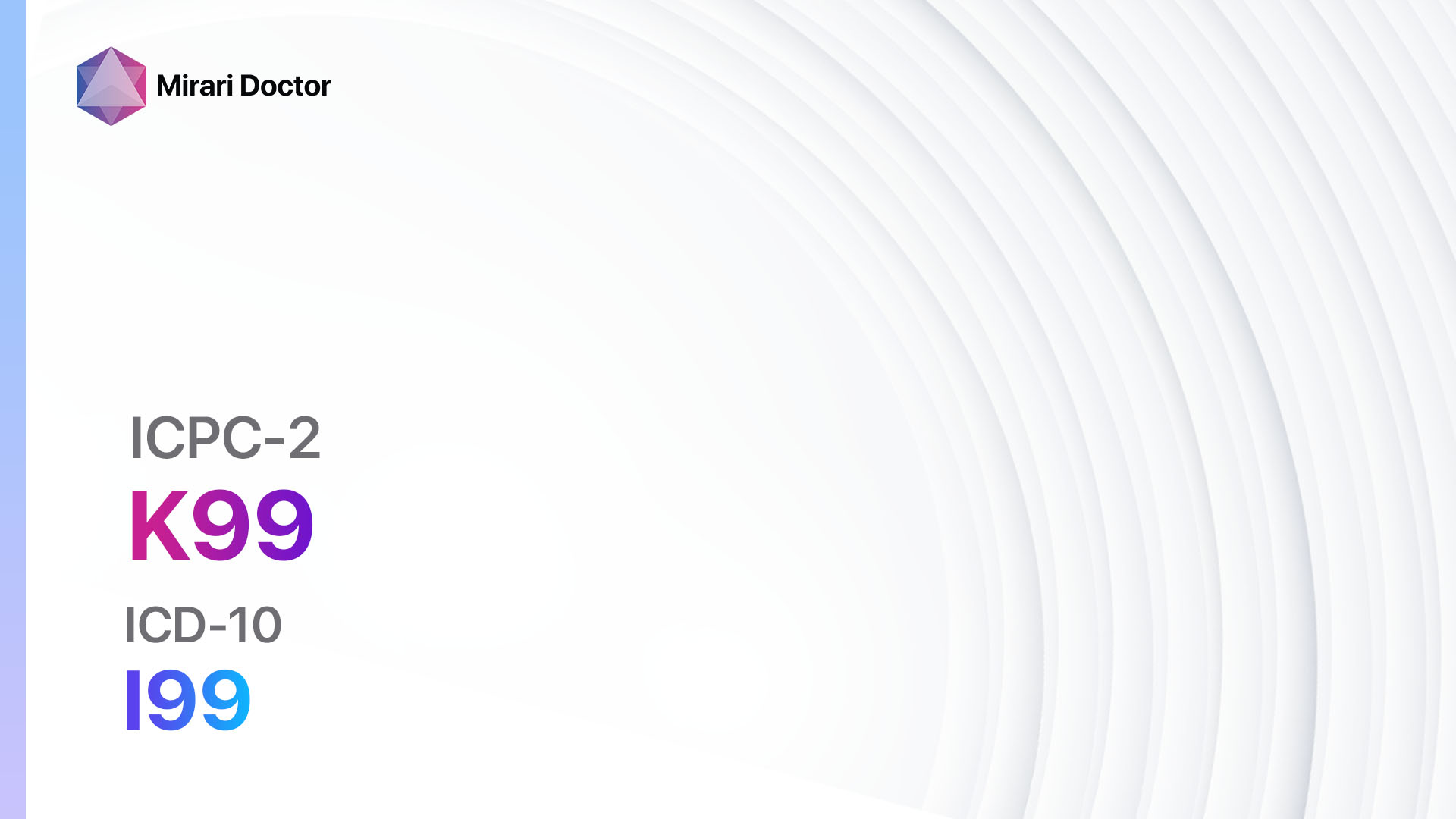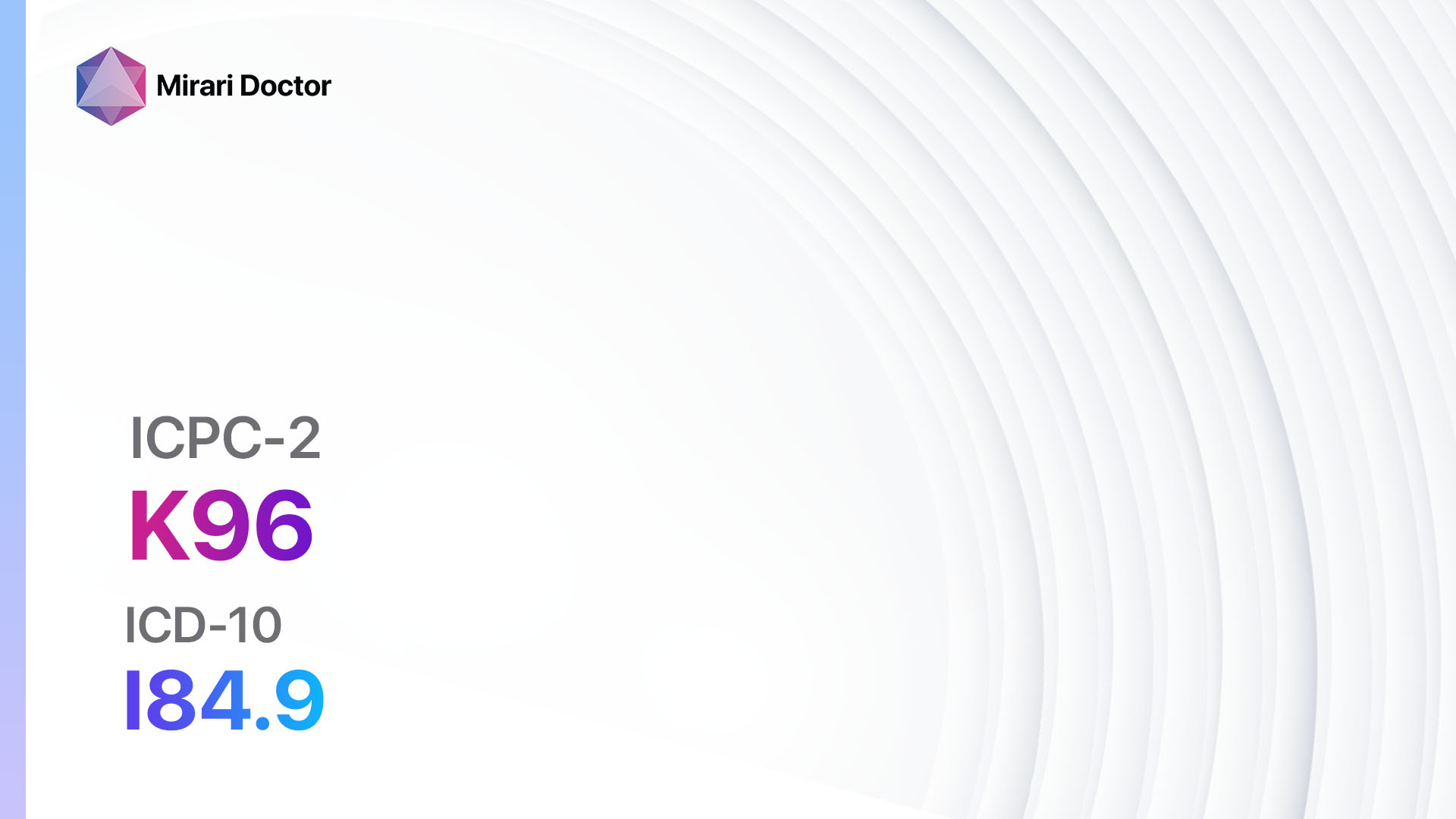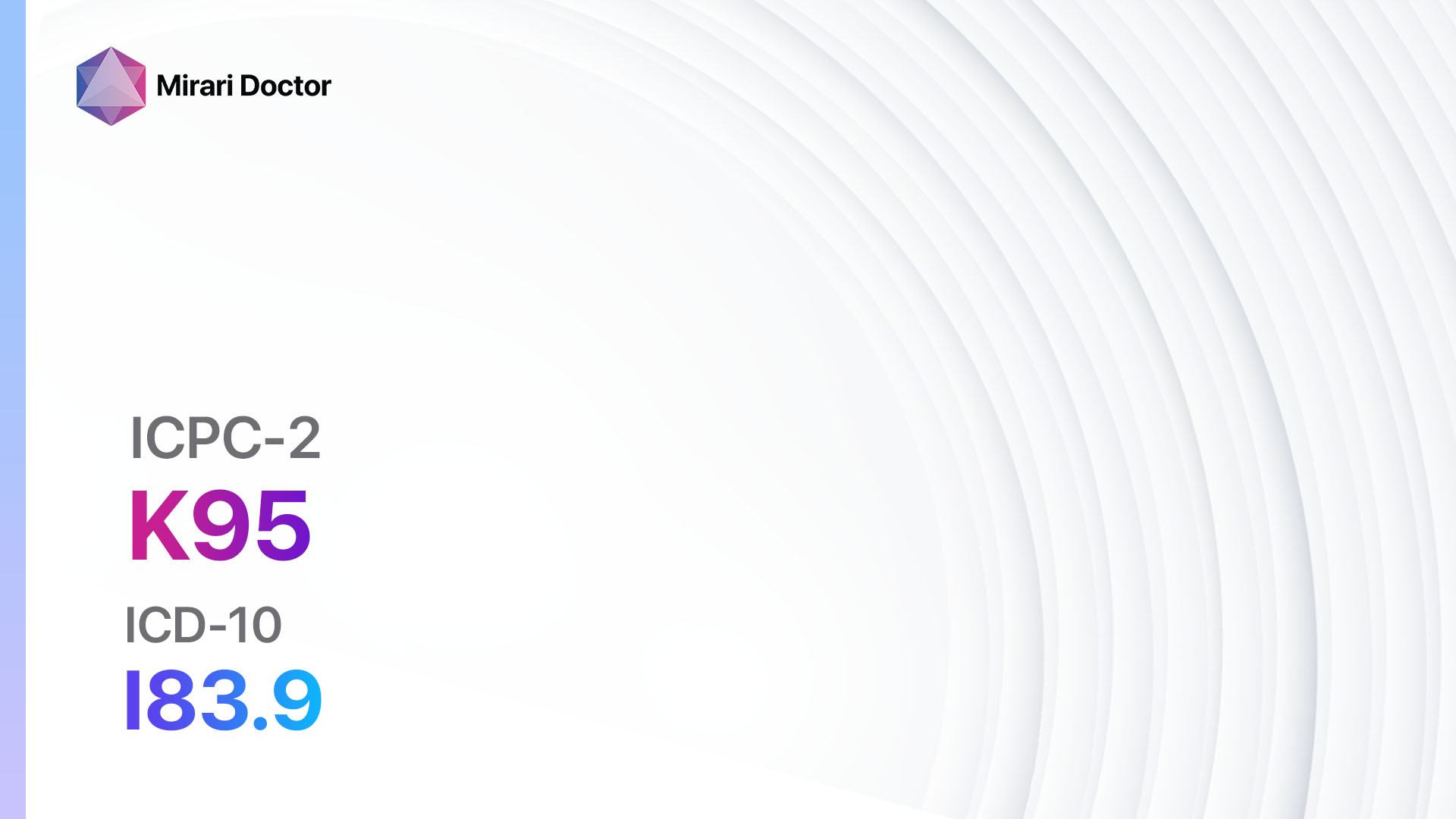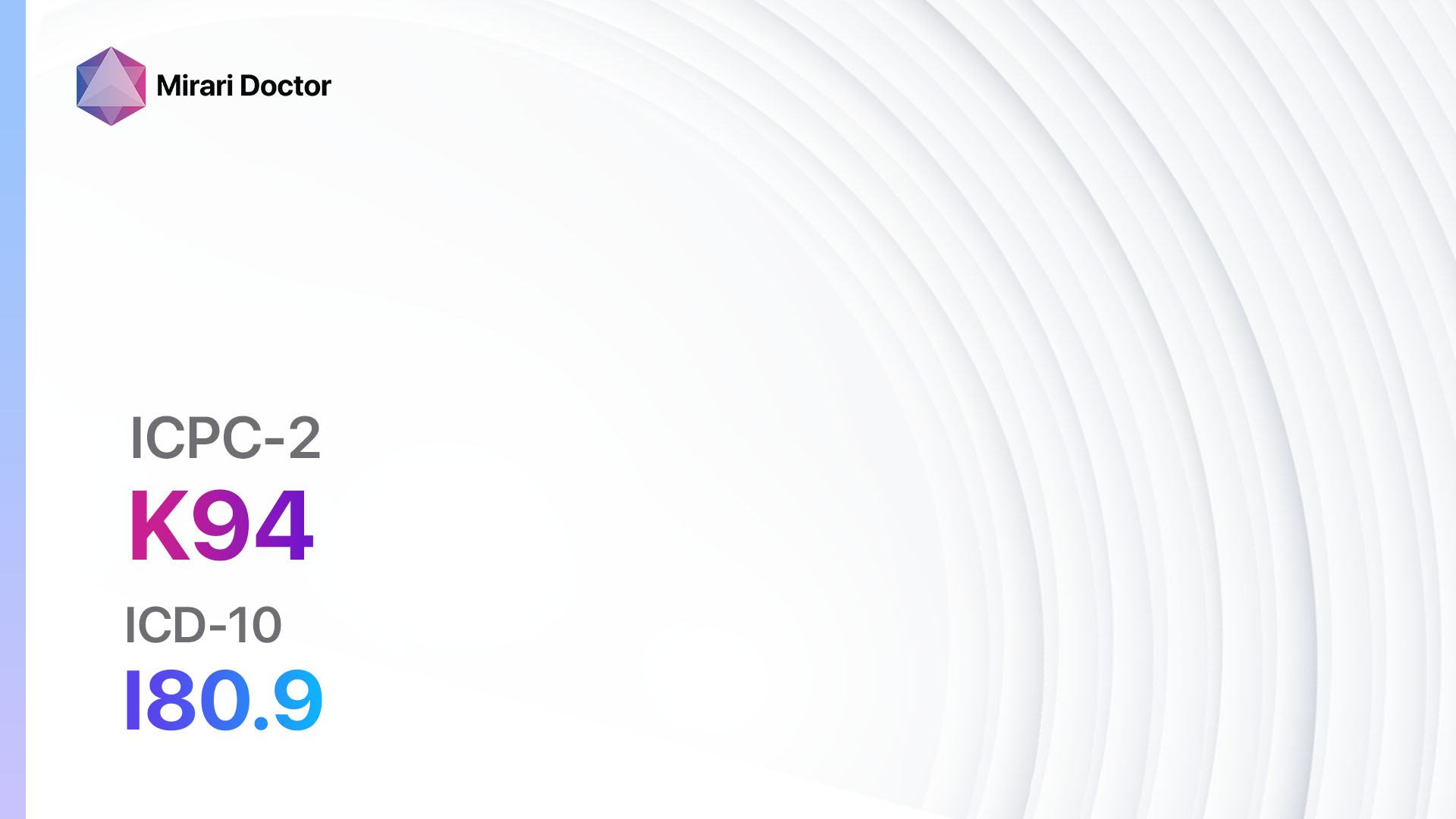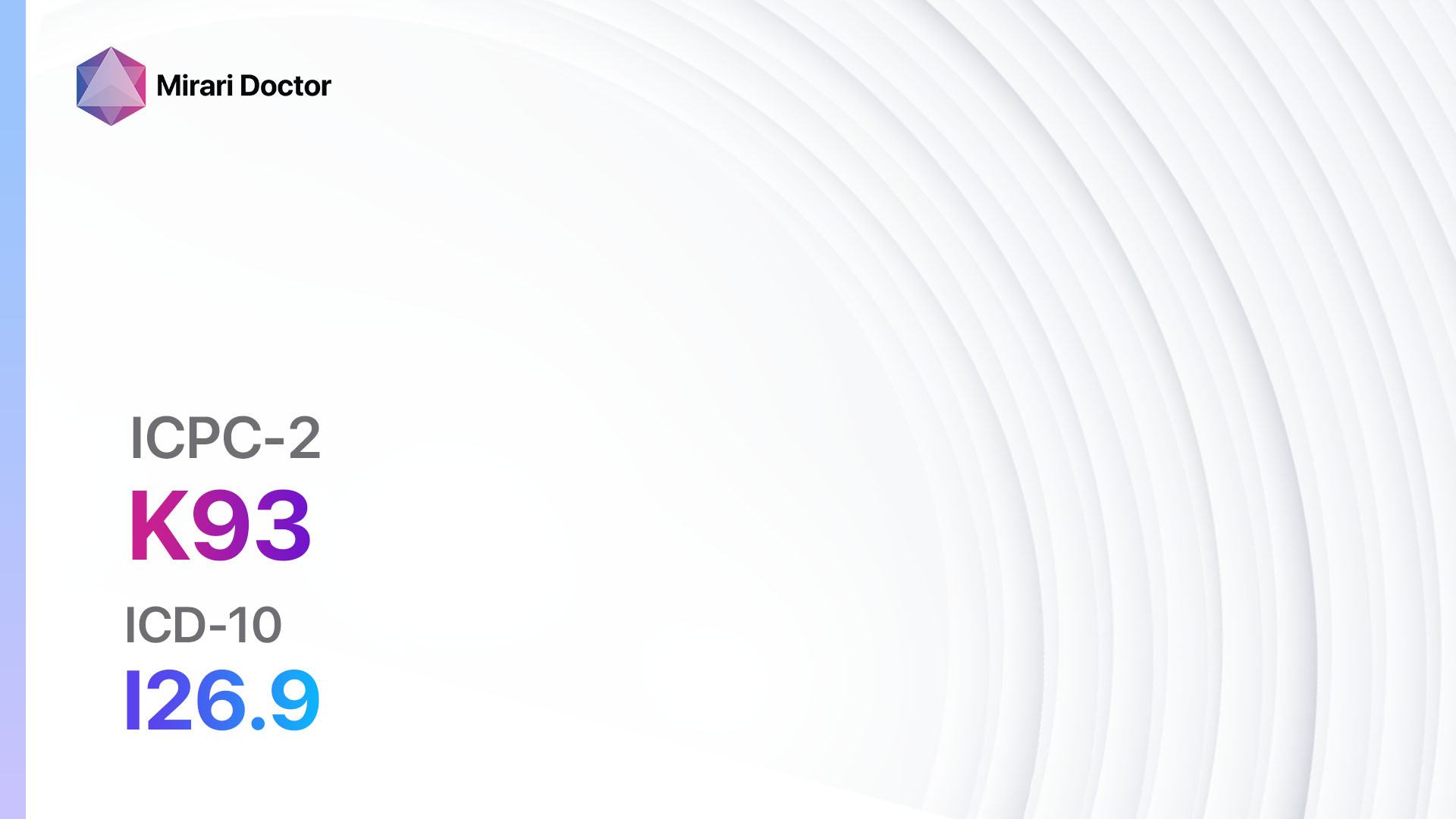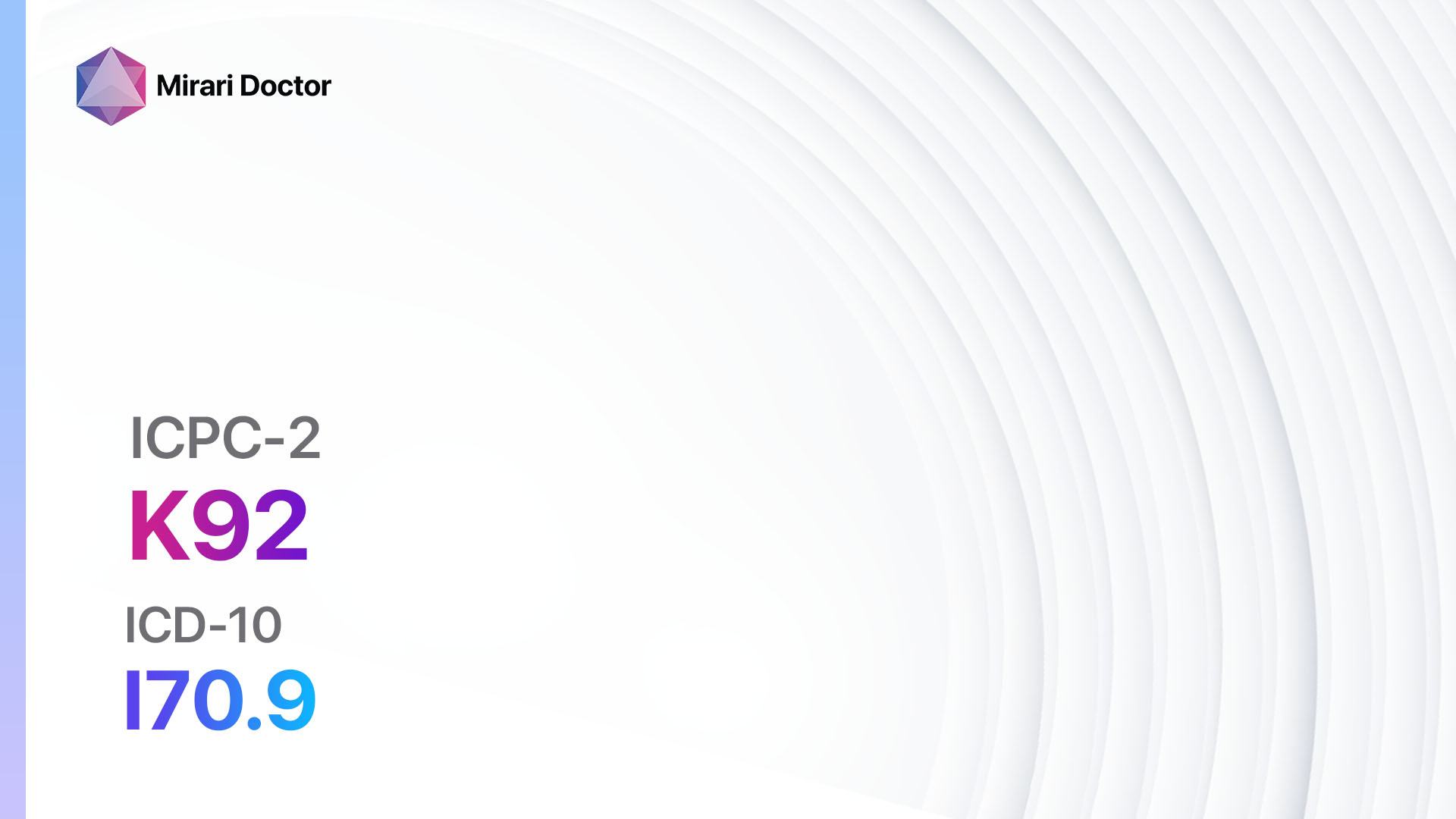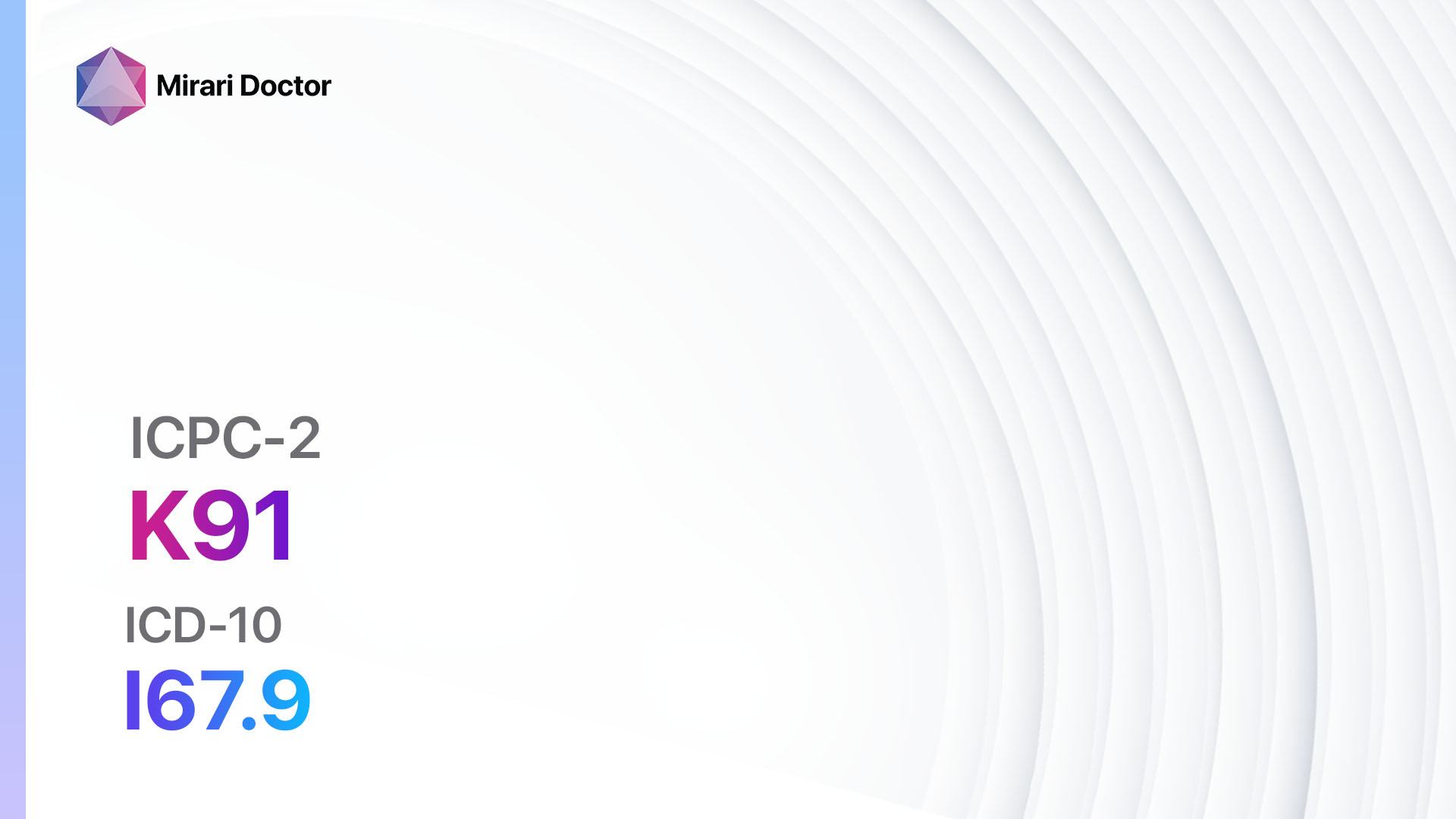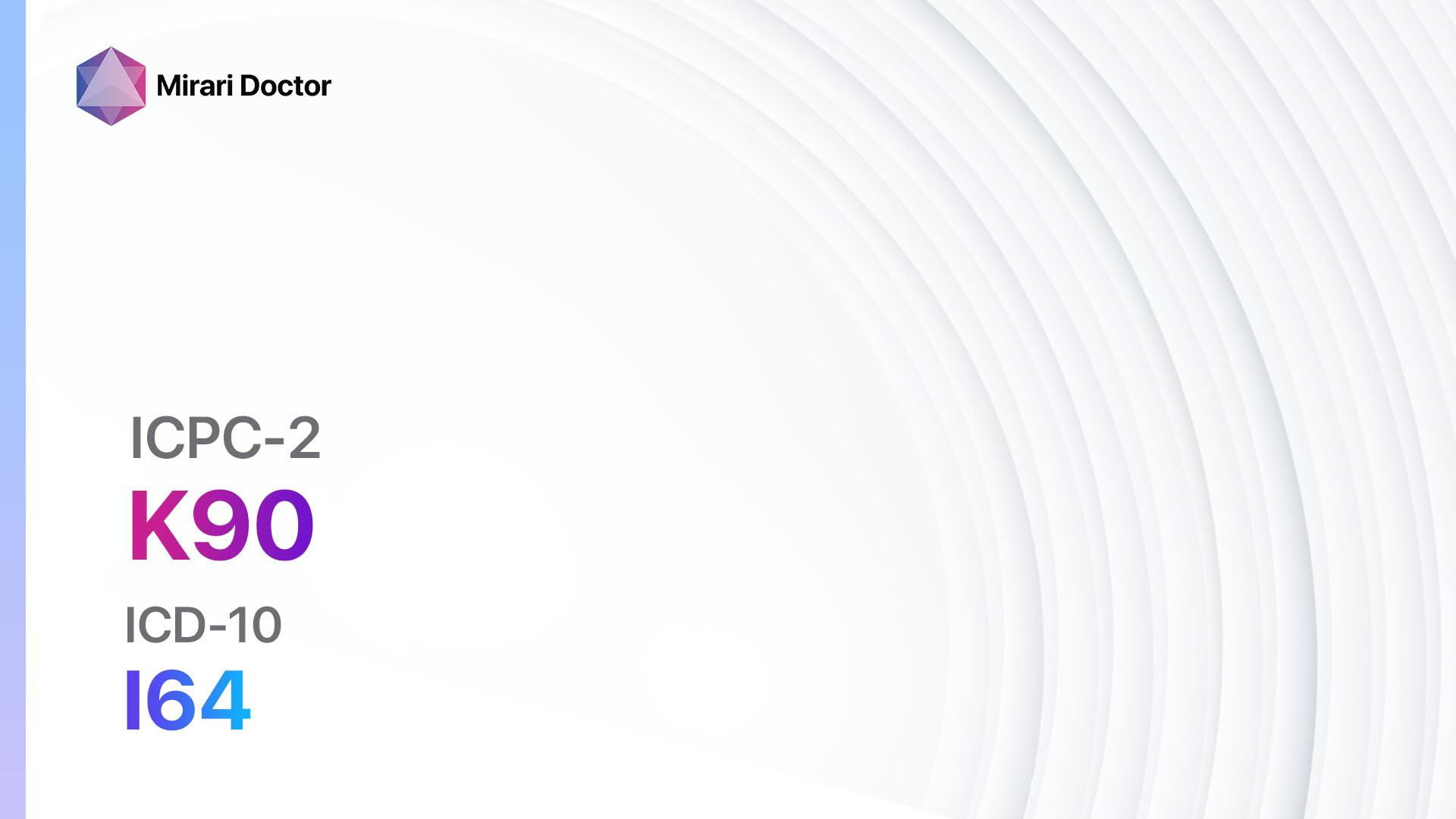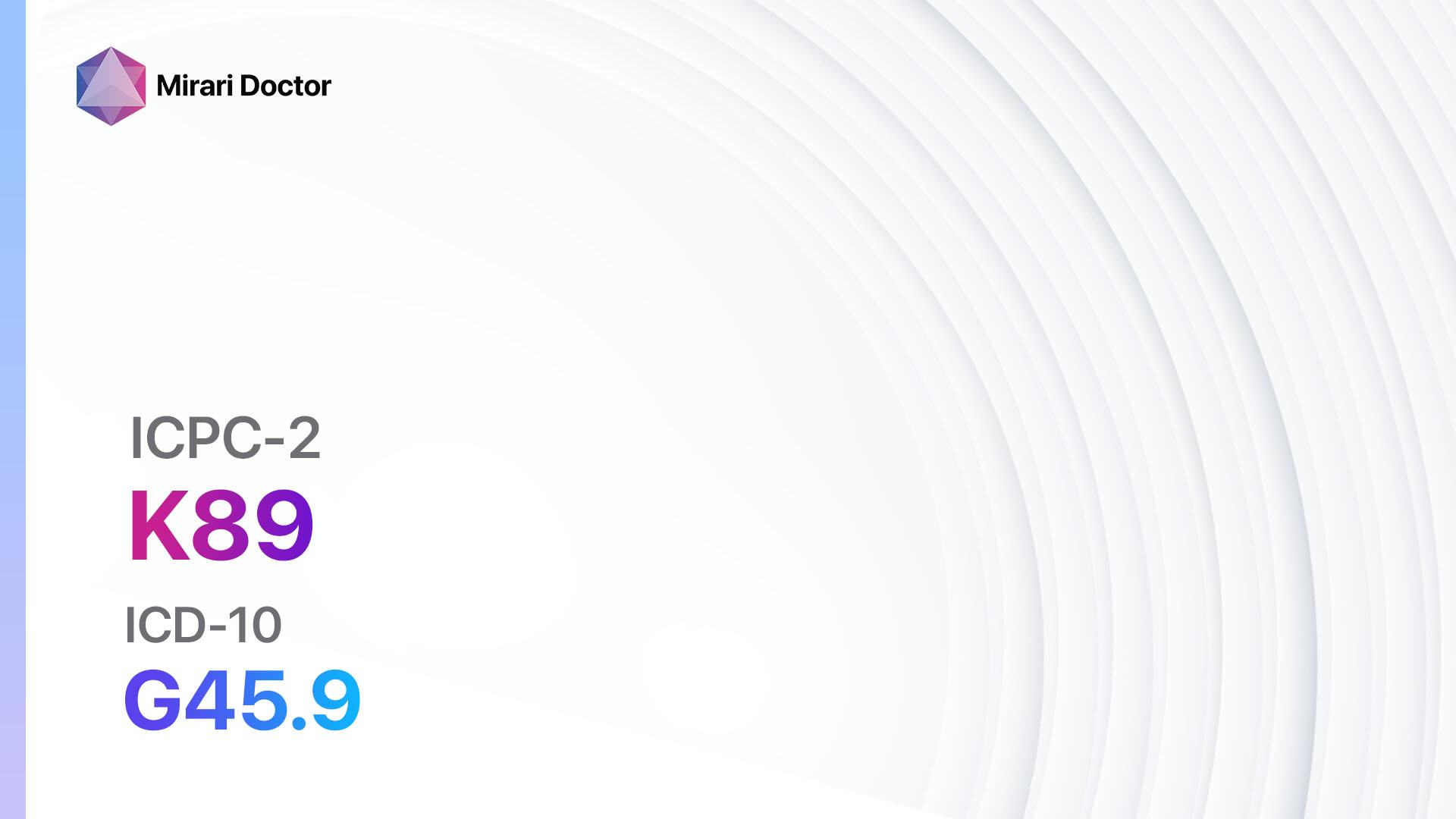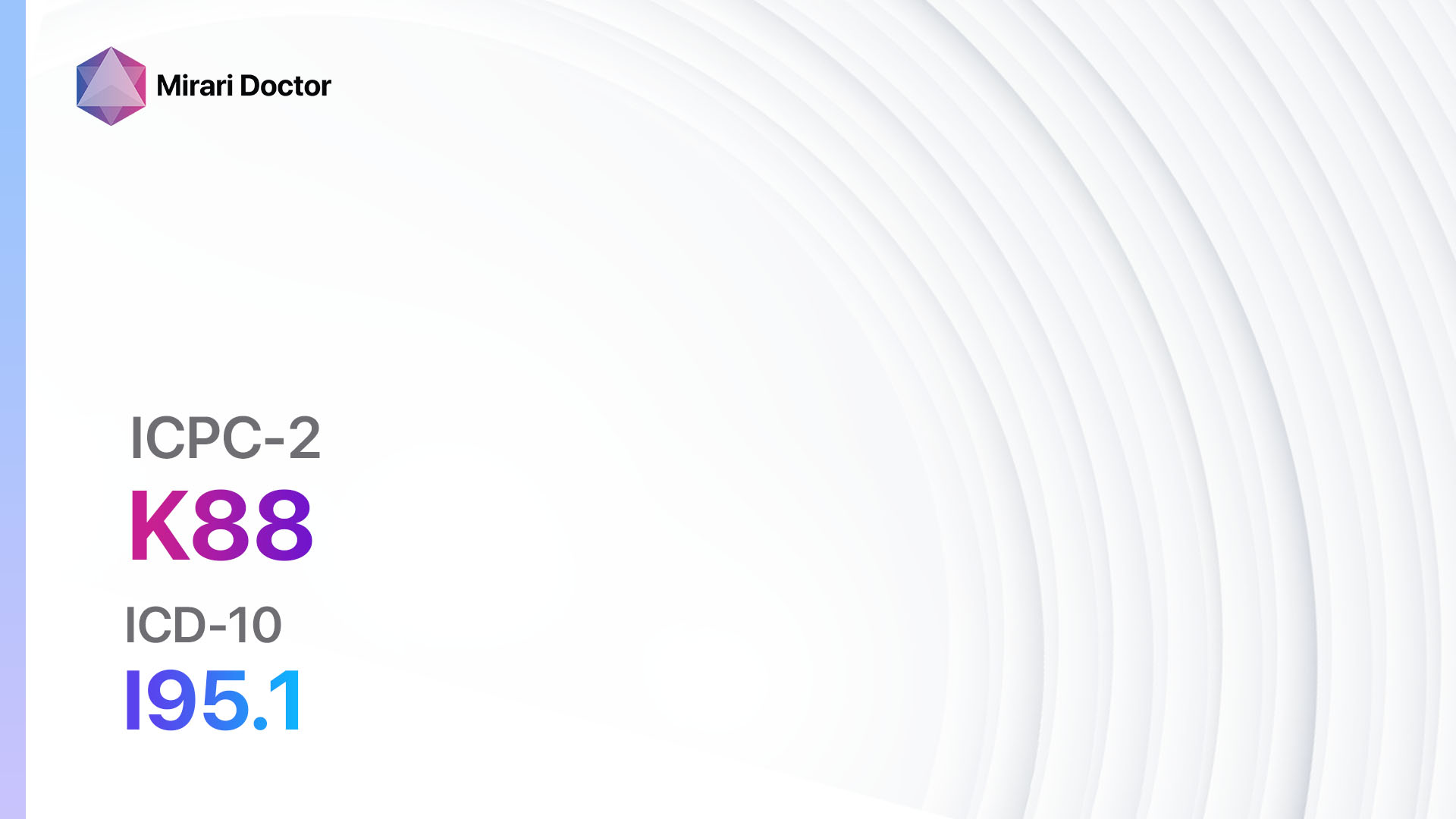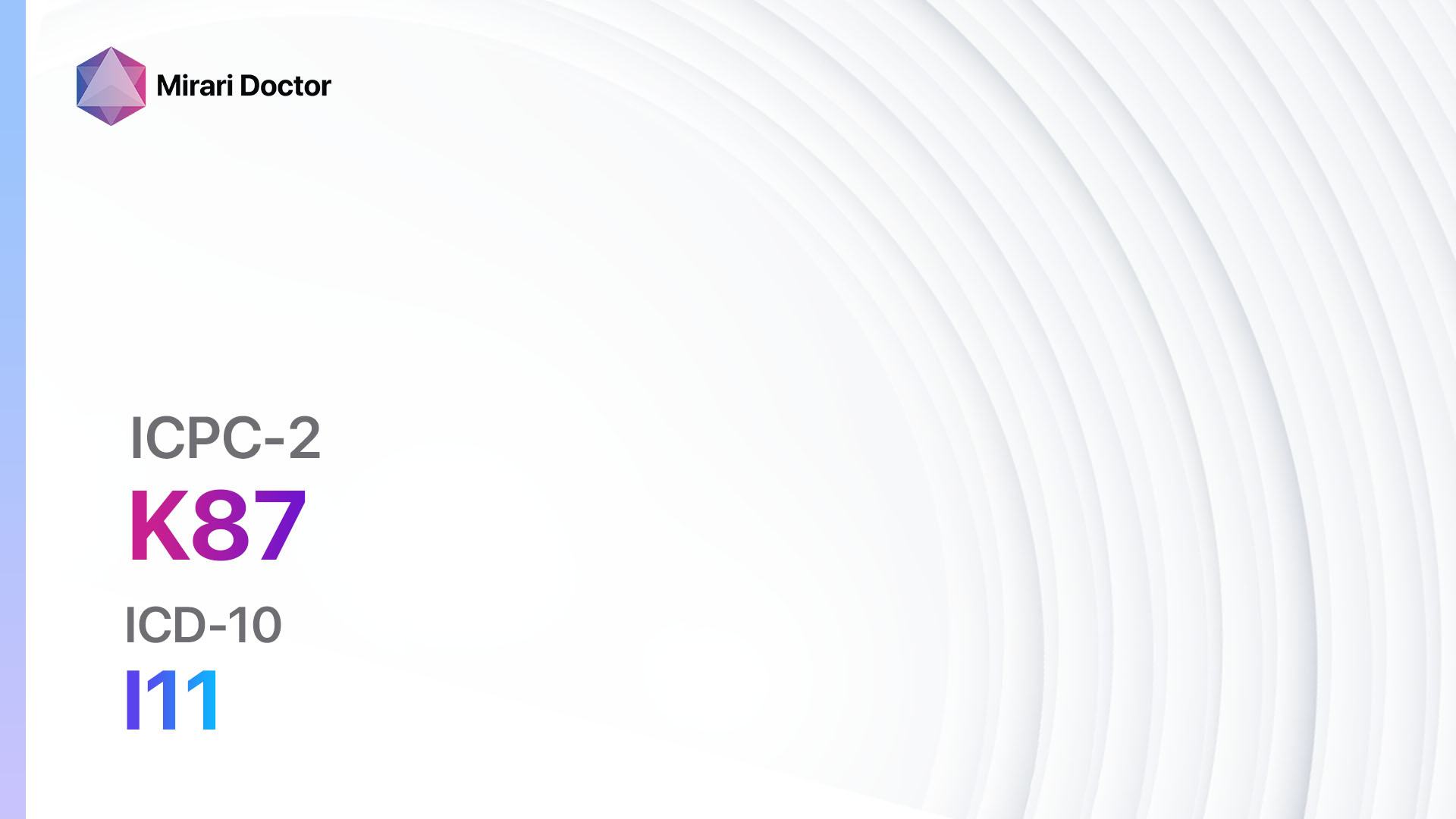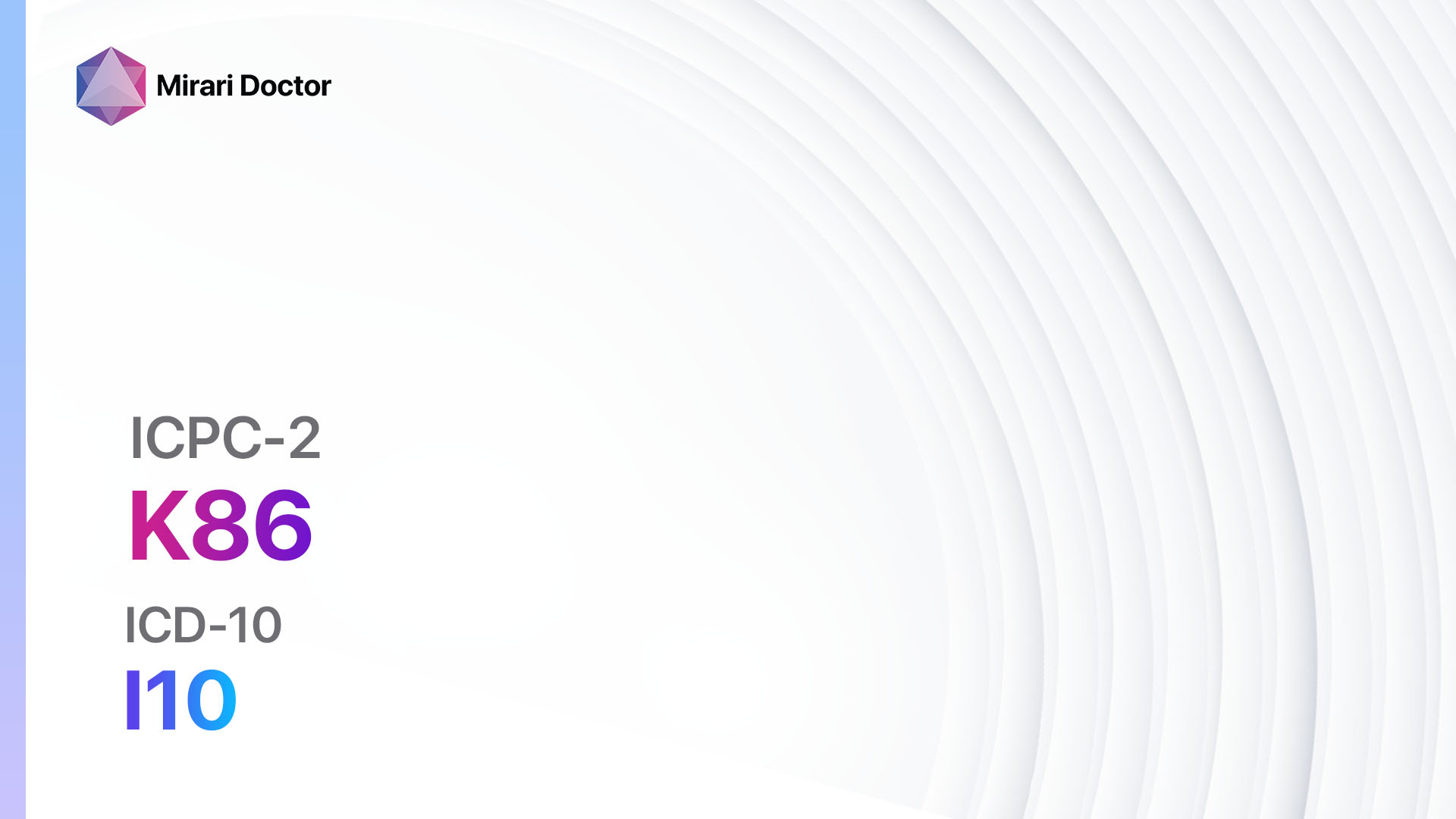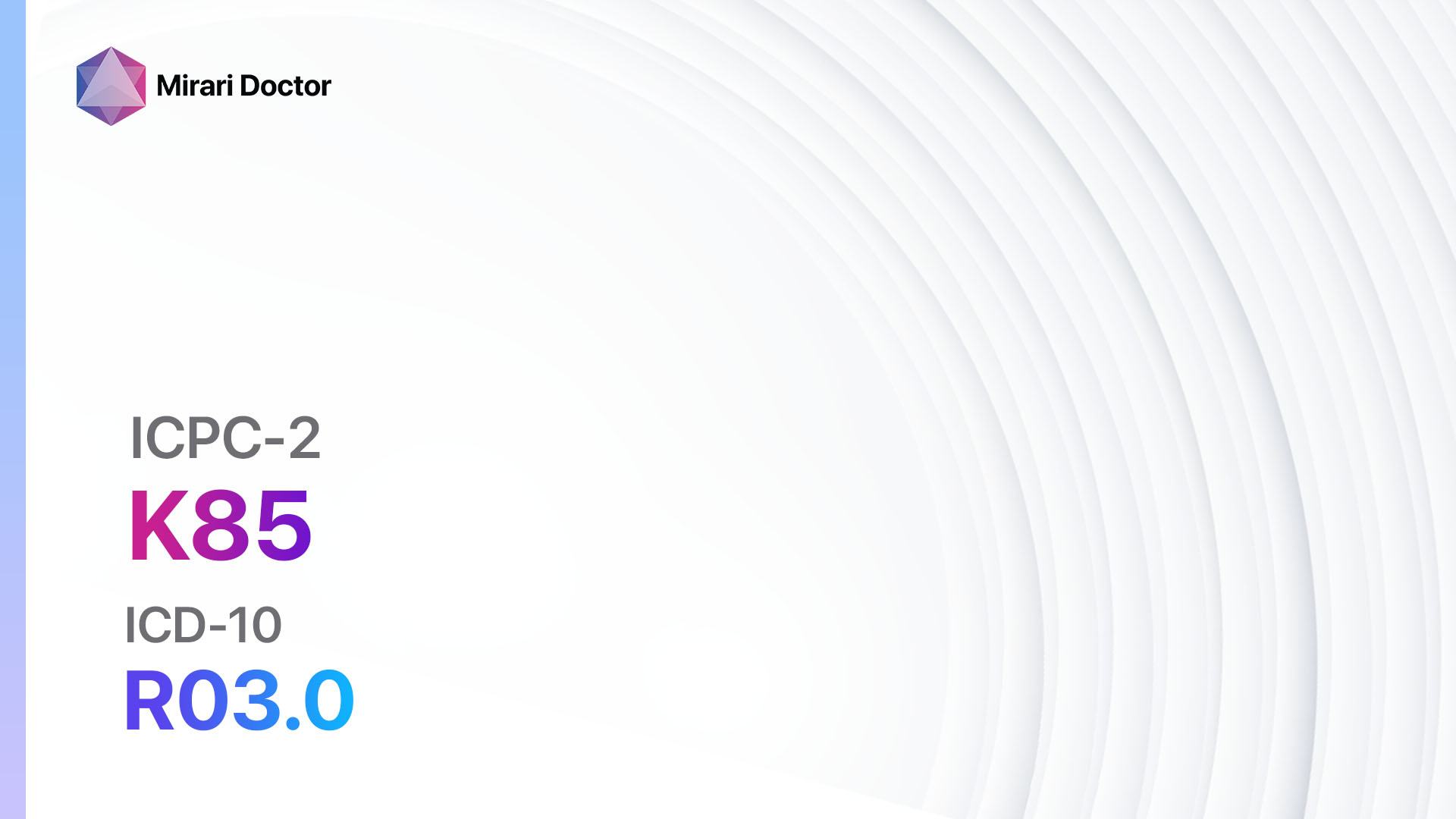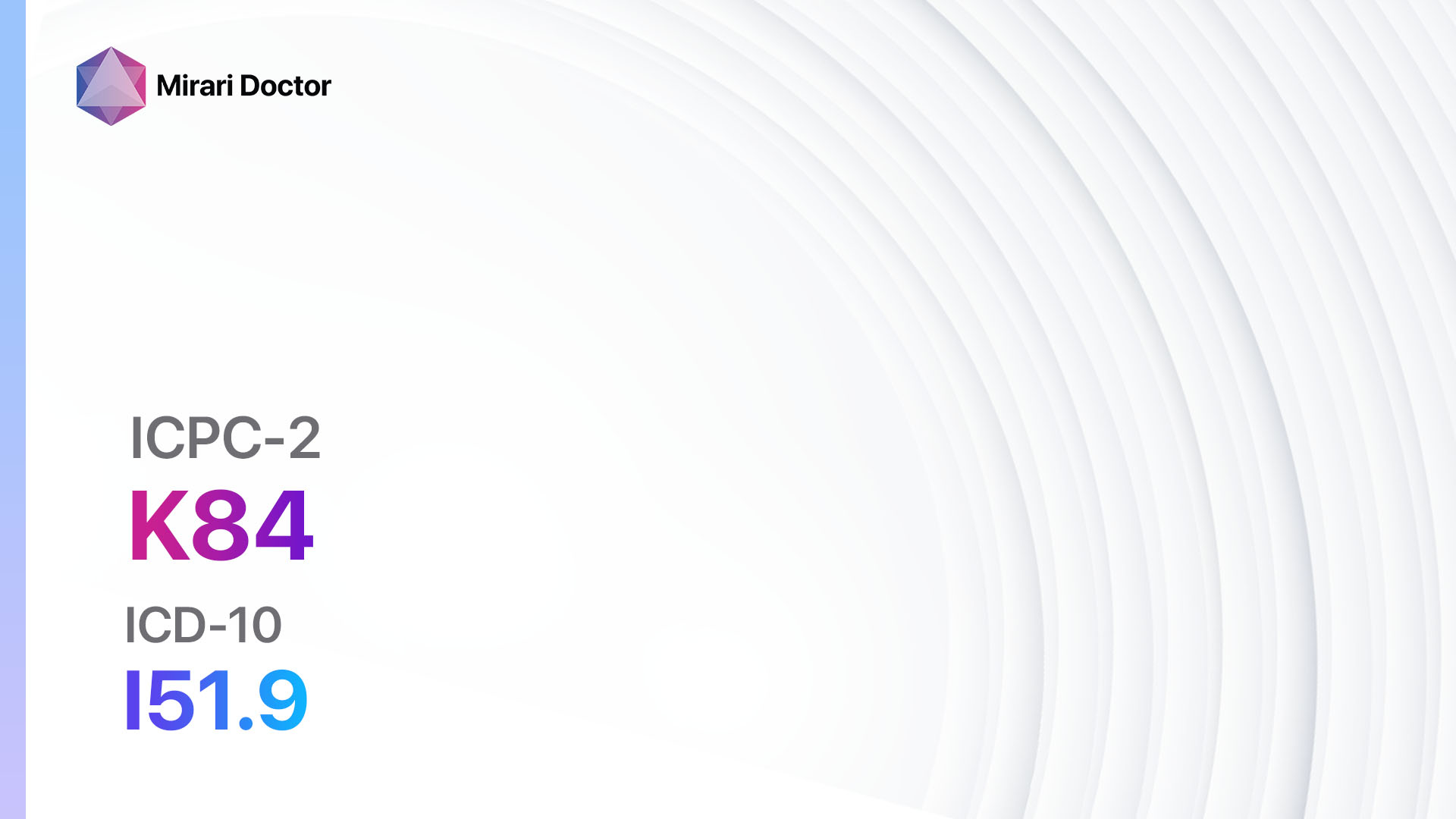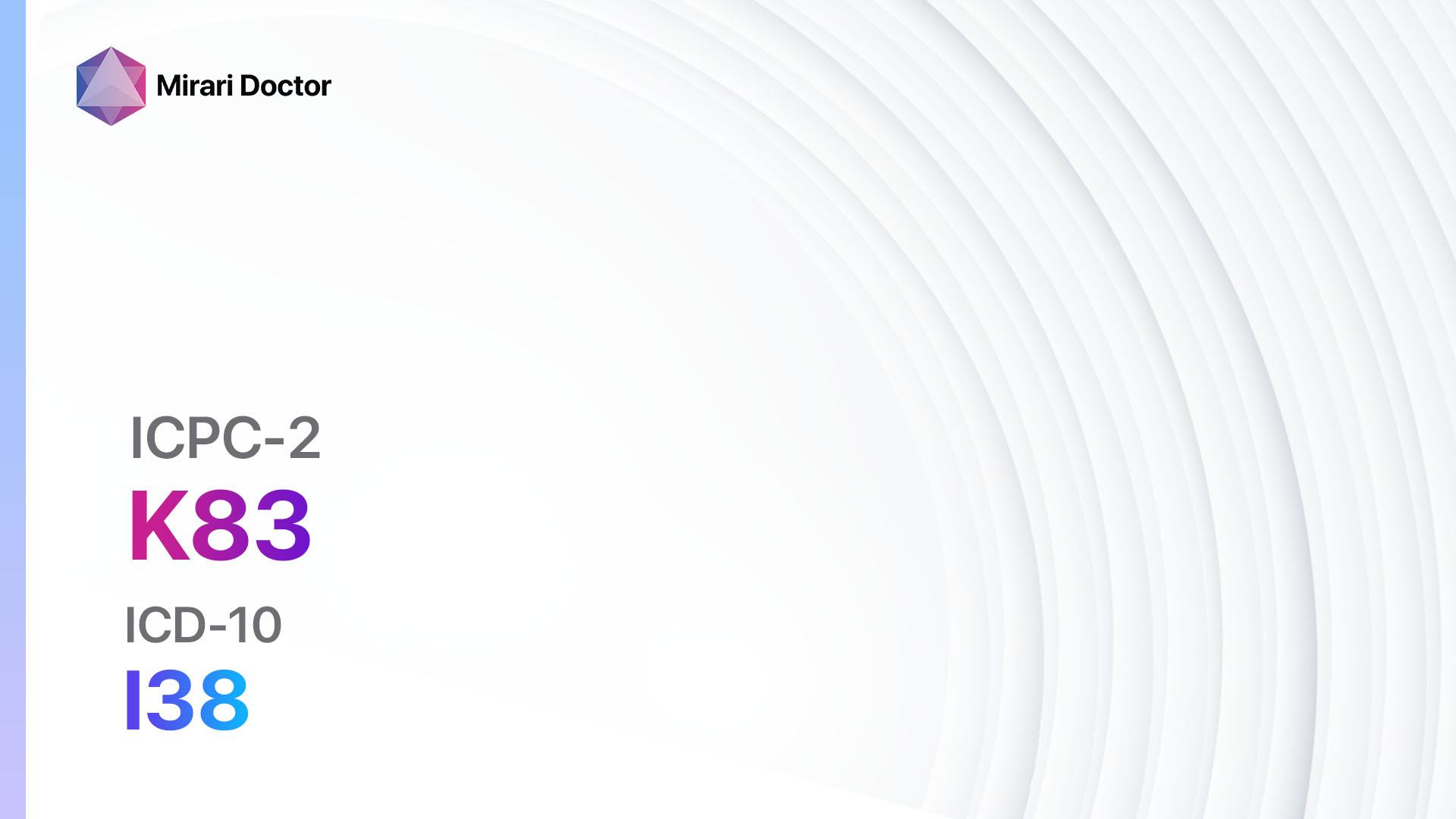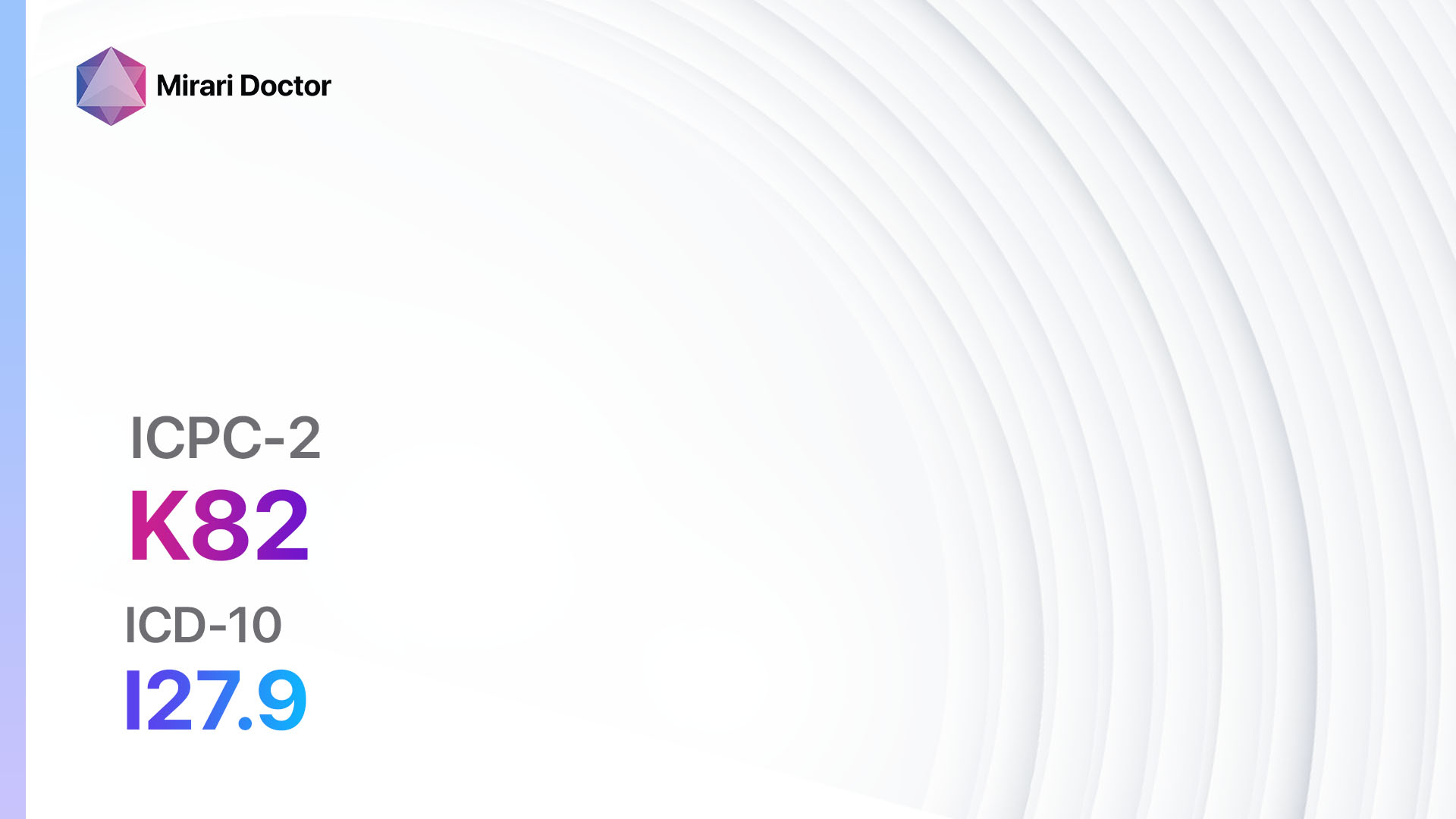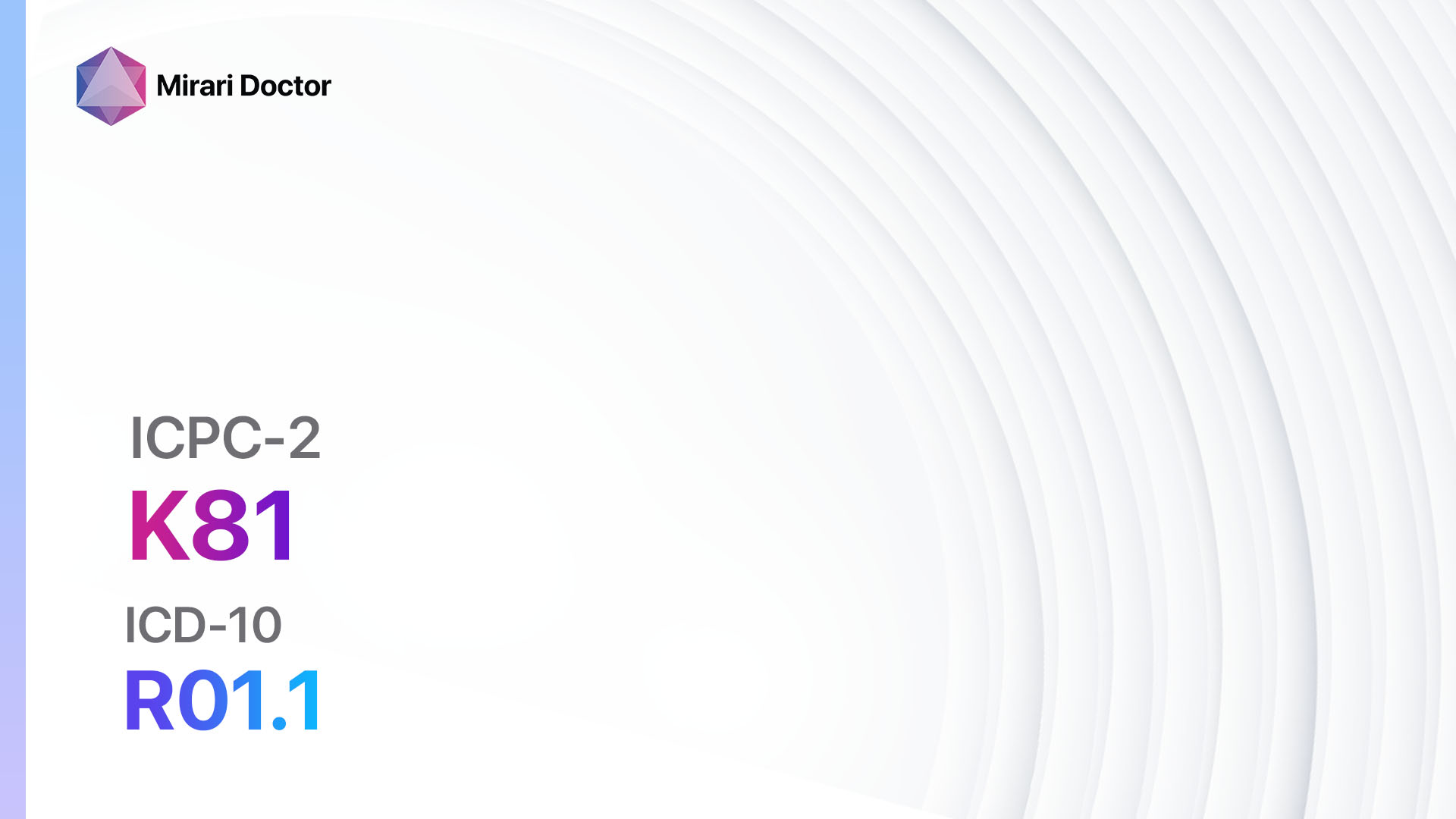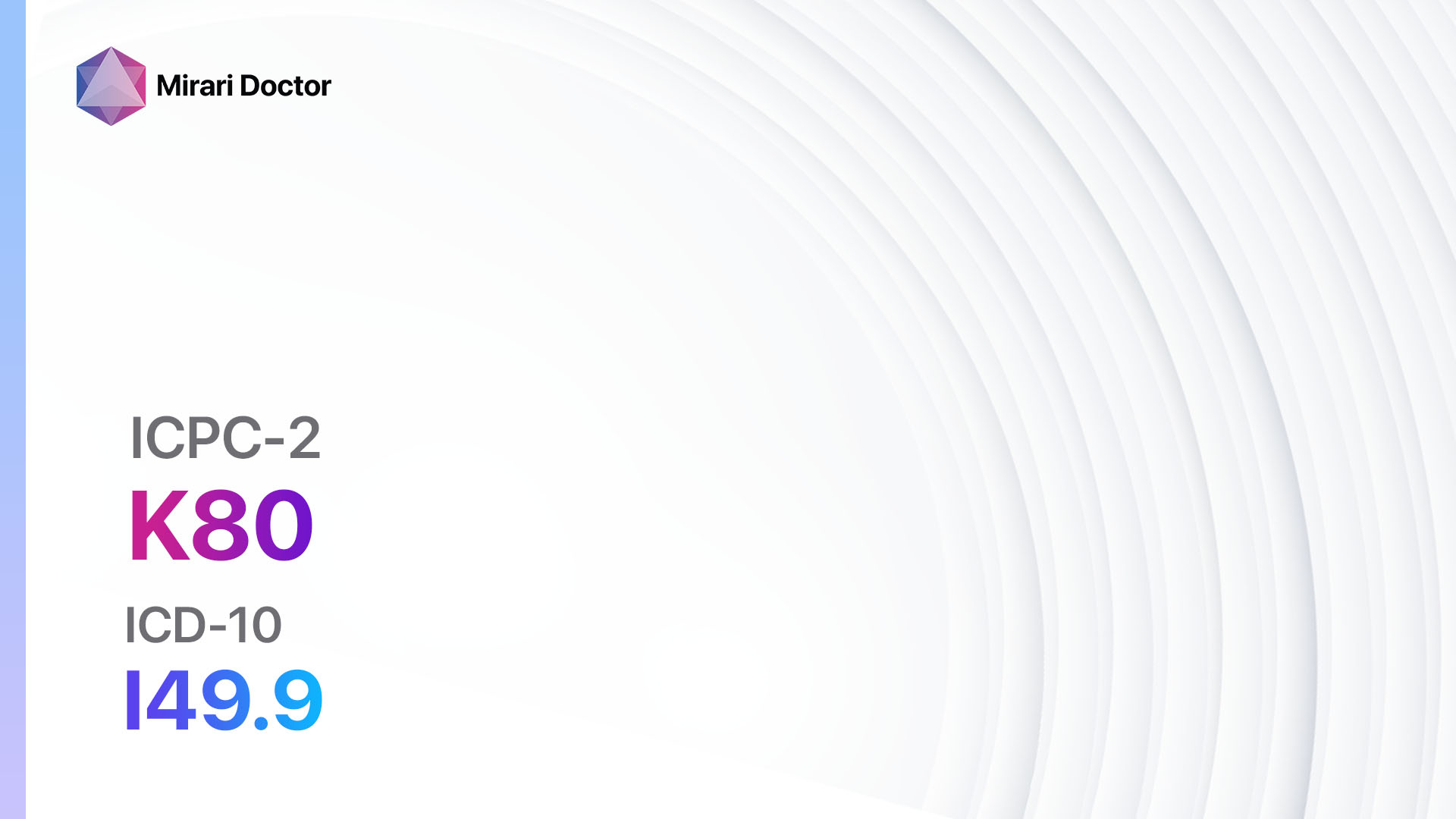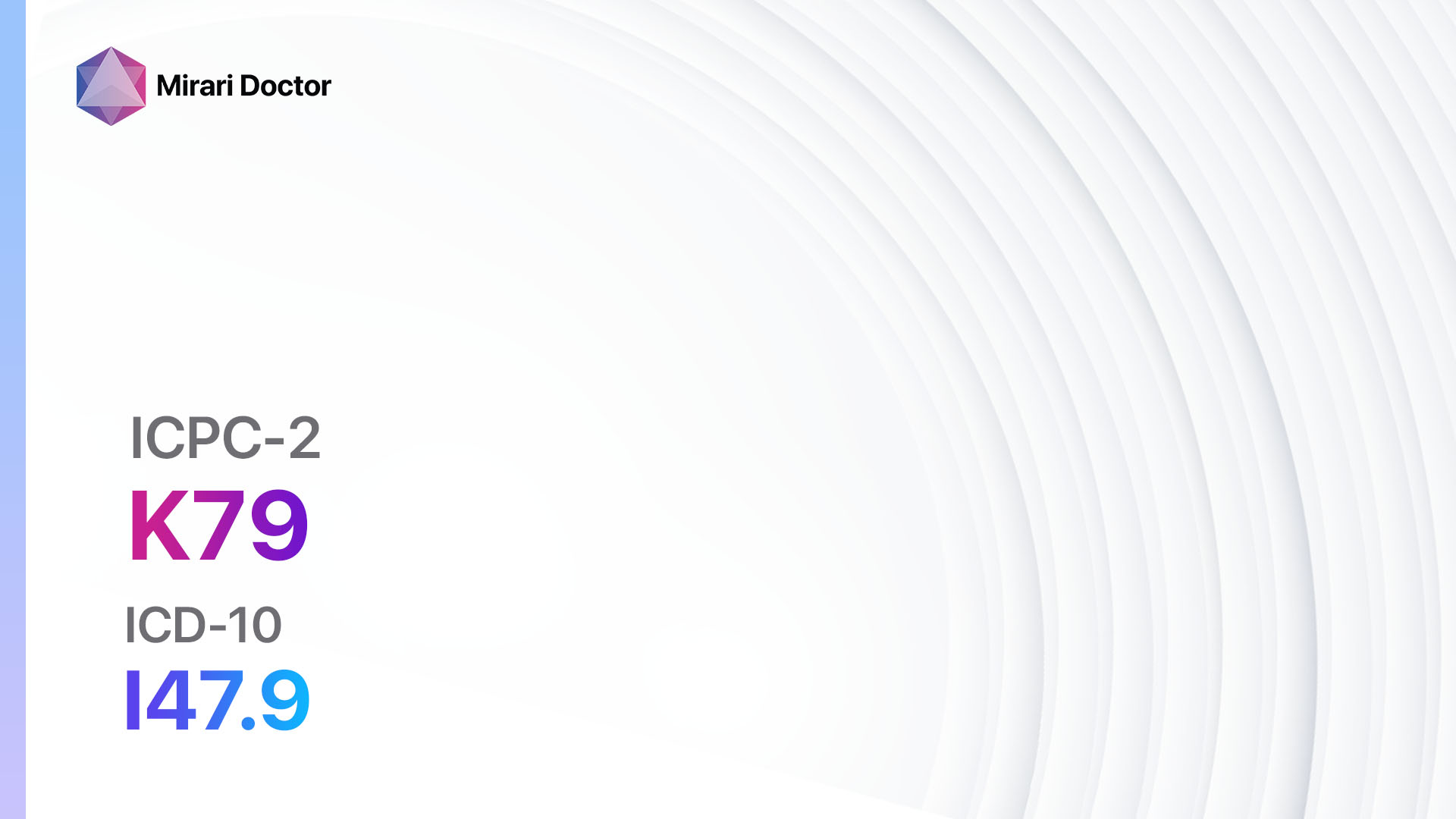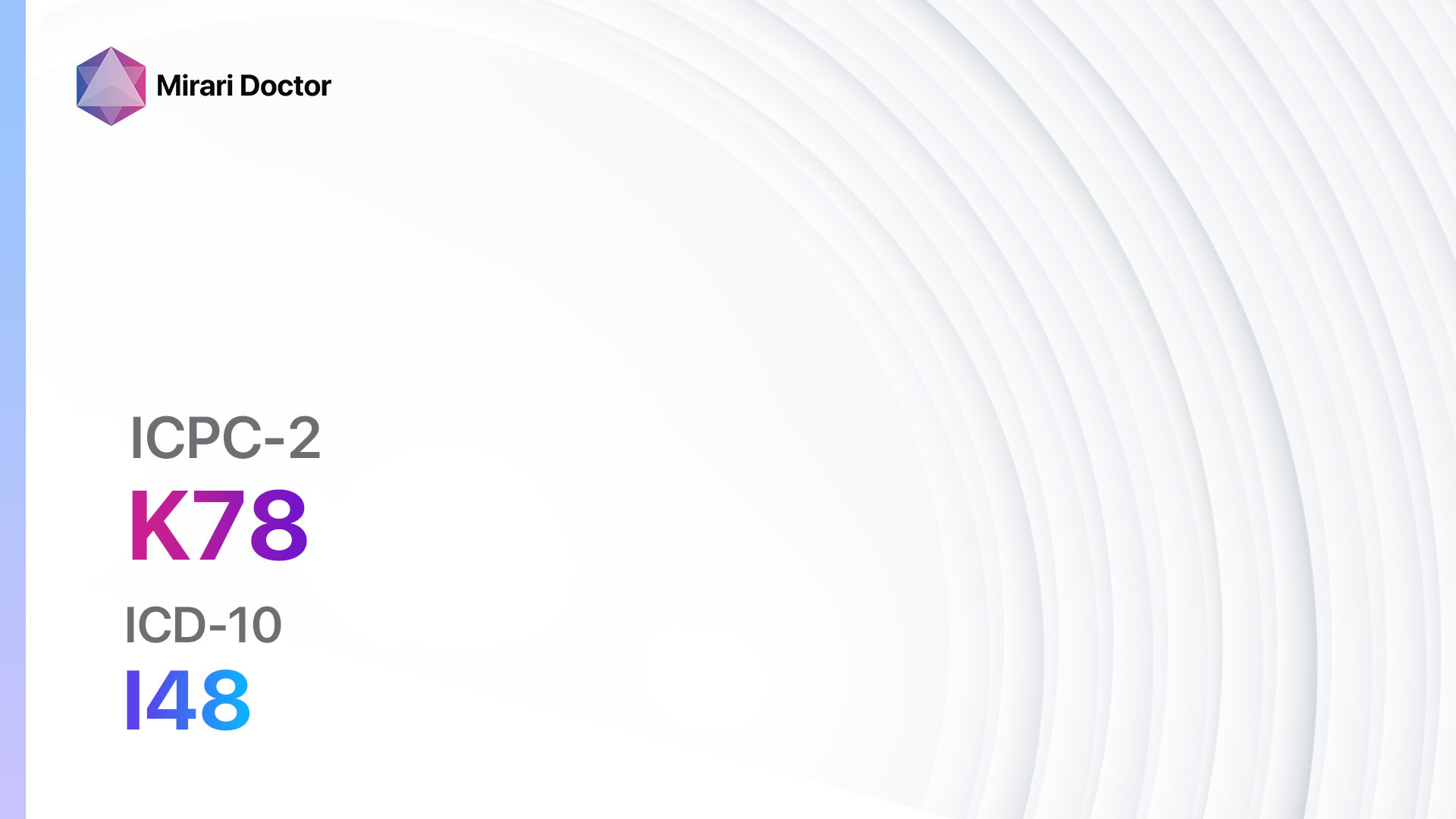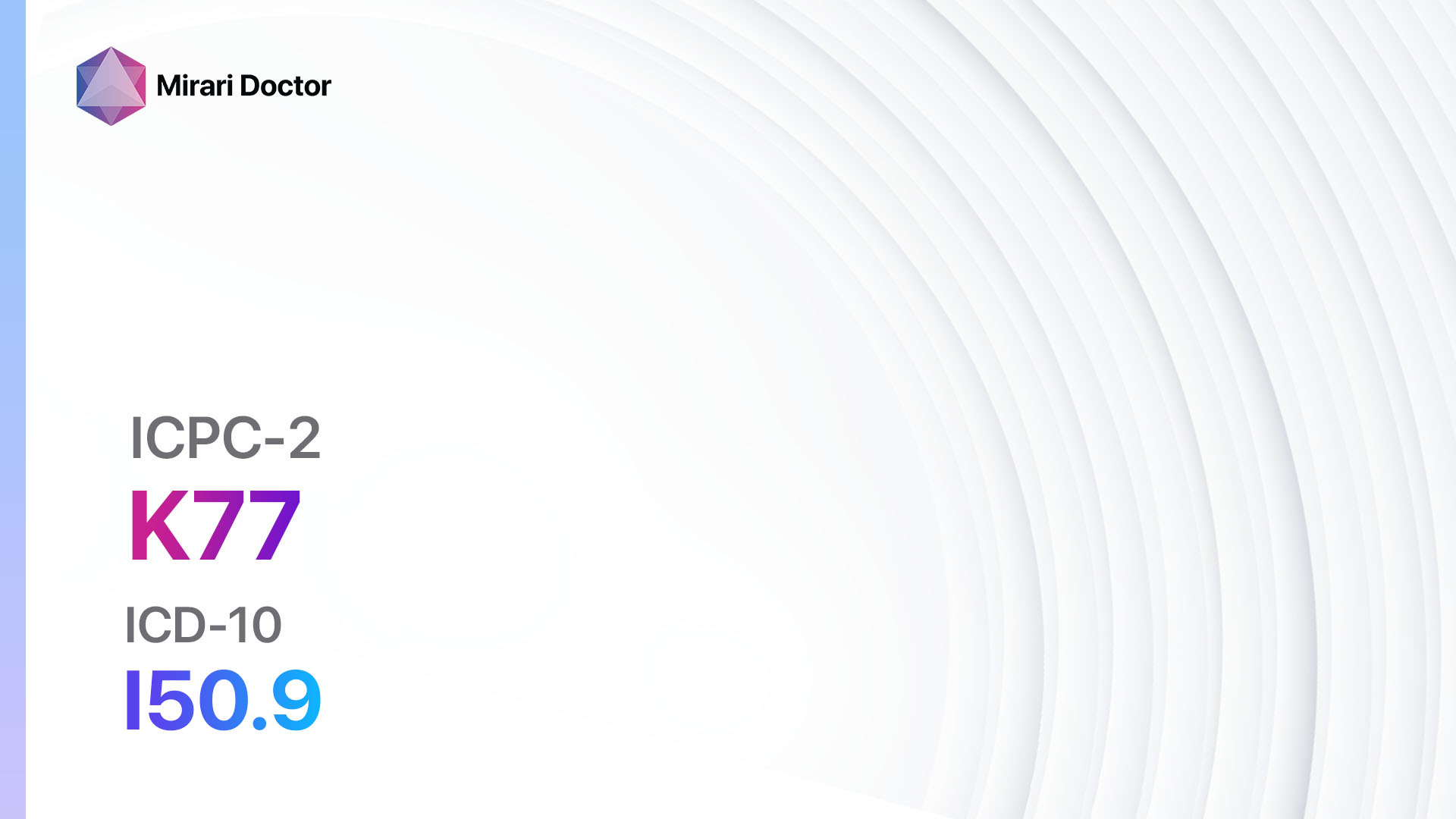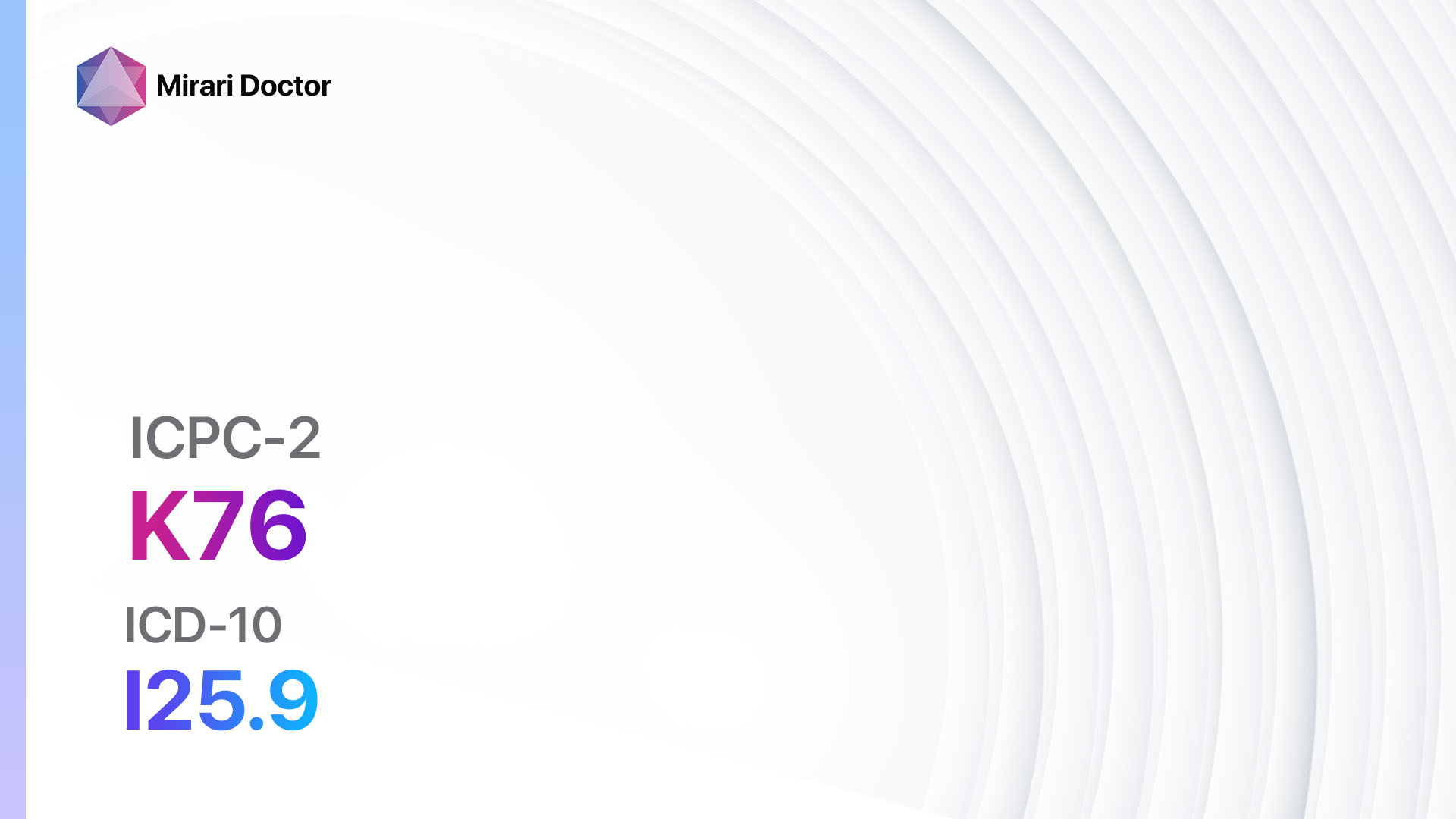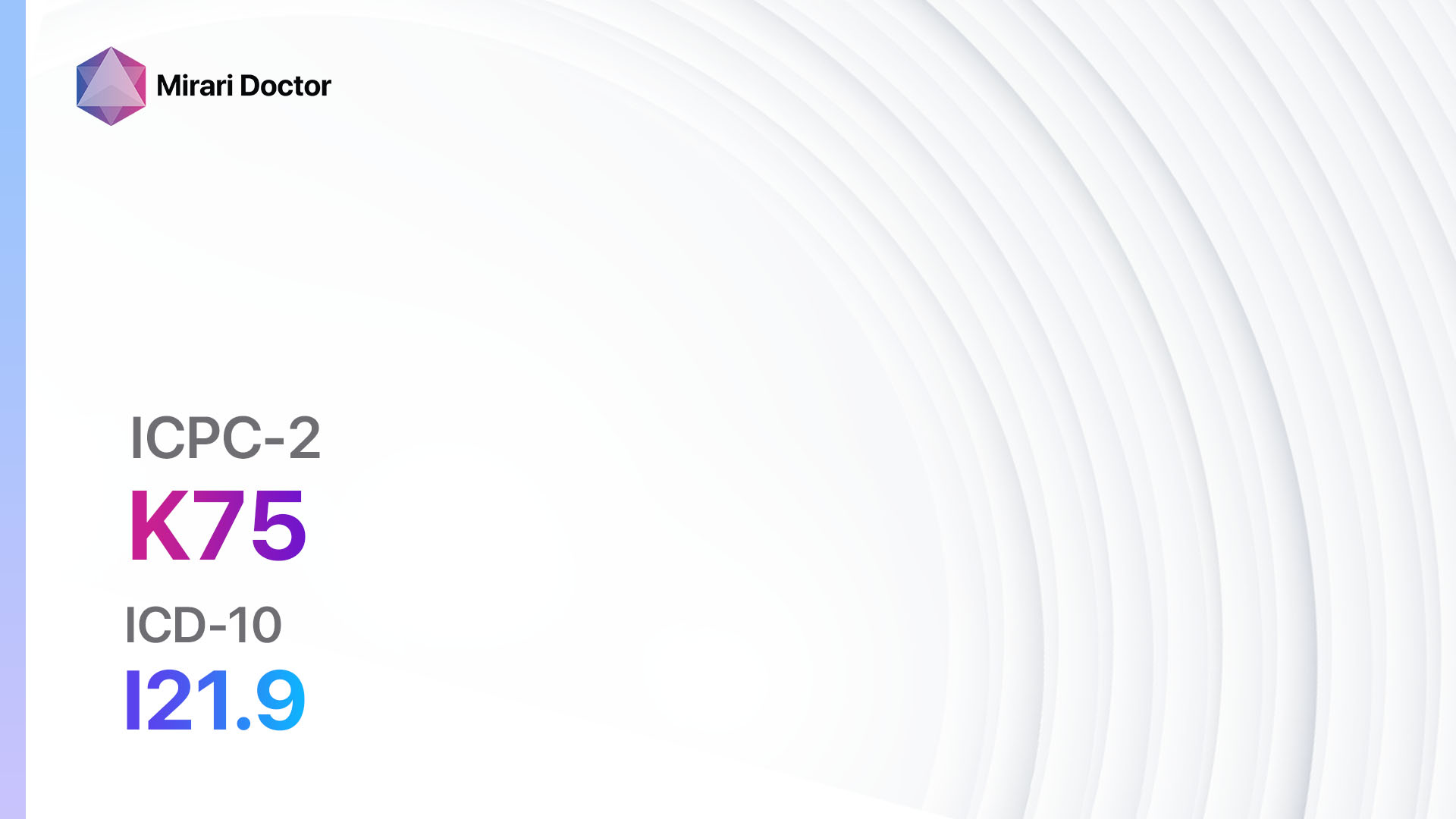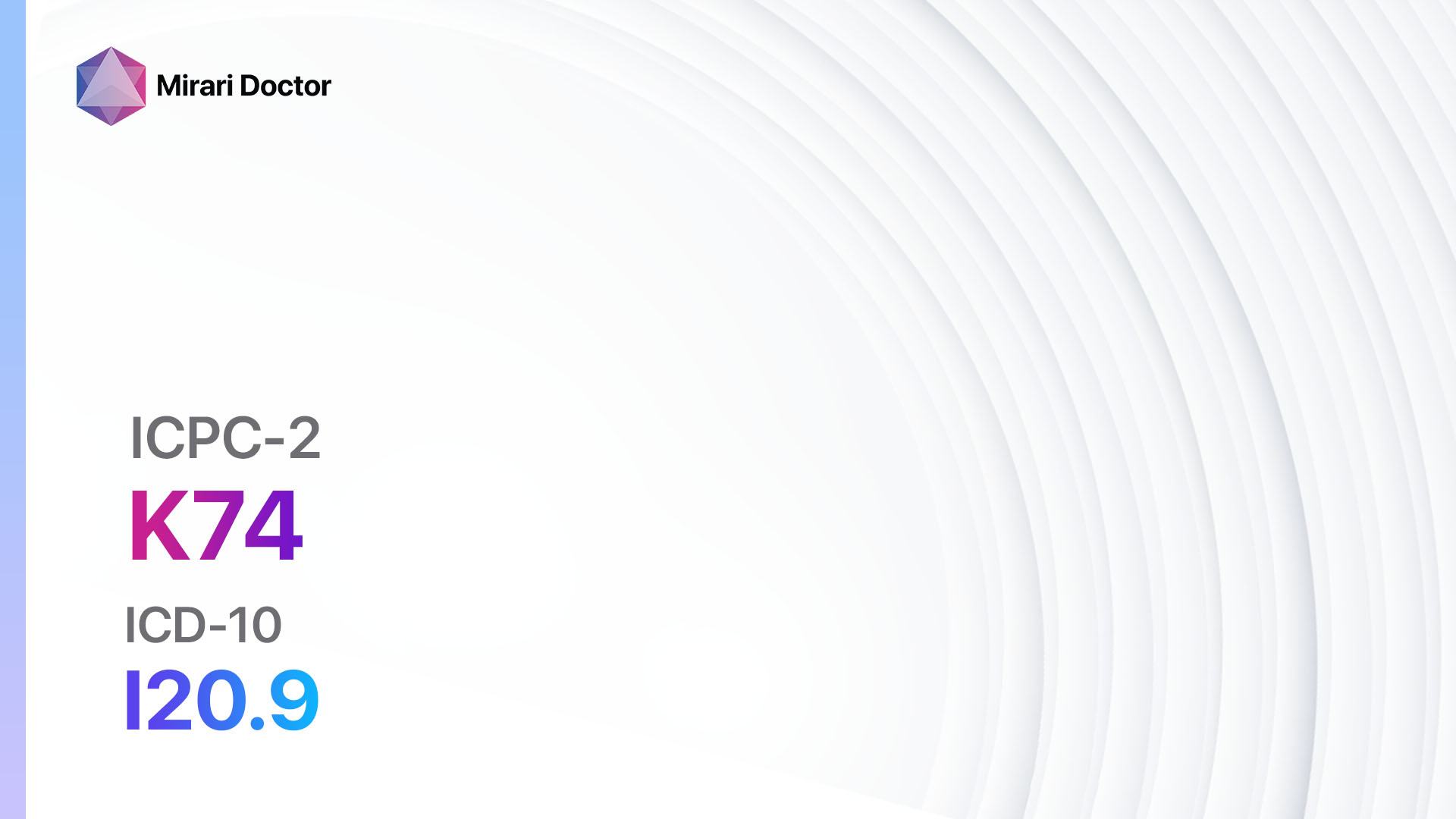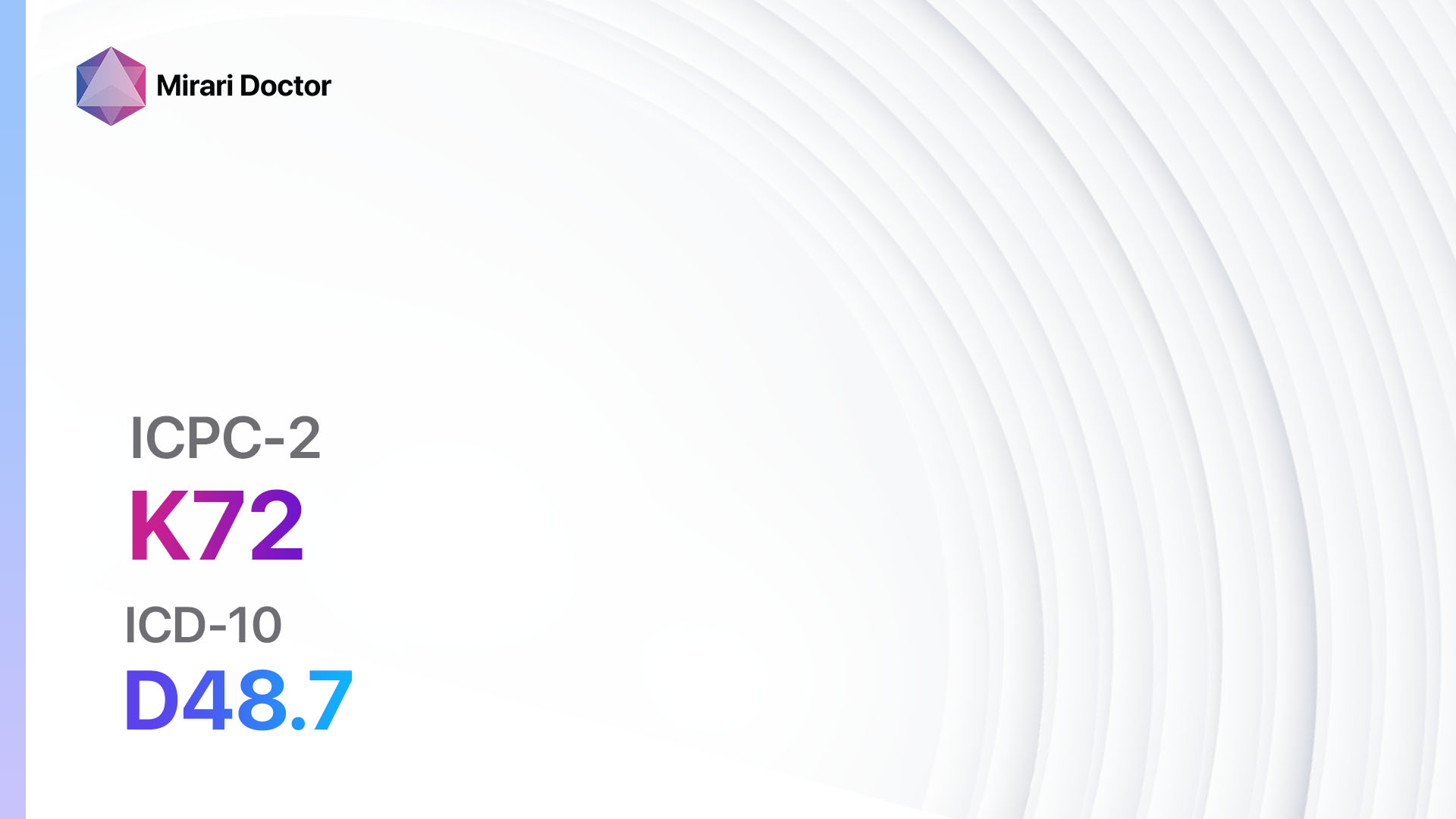
Introduction
Neoplasm cardiovascular refers to the development of tumors or abnormal growths in the cardiovascular system. These neoplasms can occur in various parts of the cardiovascular system, including the heart, blood vessels, and lymphatic system[1]. Neoplasms in the cardiovascular system can have significant implications for a patient’s health and require appropriate diagnosis and management[2]. The aim of this guide is to provide a comprehensive overview of the symptoms, causes, diagnostic steps, possible interventions, and lifestyle interventions for neoplasm cardiovascular.
Codes
- ICPC-2 Code: K72 Neoplasm cardiovascular[3]
- ICD-10 Code: D48.7 Neoplasm of uncertain or unknown behaviour of other specified sites[4]
Symptoms
- Chest pain: Patients may experience chest pain or discomfort, which can be sharp, dull, or squeezing in nature[5].
- Shortness of breath: Difficulty breathing or shortness of breath, especially during physical activity or exertion[6].
- Fatigue: Feeling tired or exhausted even with minimal physical activity[7]..
- Palpitations: Sensation of rapid, fluttering, or pounding heartbeat[8].
- Edema: Swelling in the legs, ankles, or feet due to fluid retention[9].
- Fainting or dizziness: Feeling lightheaded or fainting spells[10].
- Cyanosis: Bluish discoloration of the skin or lips due to inadequate oxygen supply.
Causes
- Genetic factors: Certain genetic mutations or inherited conditions can increase the risk of developing neoplasms in the cardiovascular system.
- Environmental factors: Exposure to certain chemicals, radiation, or toxins may contribute to the development of neoplasms.
- Age: The risk of developing neoplasms in the cardiovascular system increases with age.
- Smoking: Tobacco smoking is a significant risk factor for the development of cardiovascular neoplasms.
- Chronic inflammation: Conditions such as chronic infections or autoimmune disorders can increase the risk of neoplasms.
Diagnostic Steps
Medical History
- Gather information about the patient’s symptoms, including the duration, severity, and any triggering factors.
- Assess the patient’s medical history, including any previous cardiovascular conditions, family history of neoplasms, or other relevant medical conditions.
- Identify any risk factors, such as smoking, exposure to toxins, or genetic predisposition.
Physical Examination
- Perform a thorough physical examination, including vital signs, heart auscultation, and examination of peripheral pulses.
- Look for any signs of edema, cyanosis, or abnormal growths.
- Assess the patient’s overall cardiovascular health and identify any abnormalities.
Laboratory Tests
- Complete blood count (CBC): To assess for any abnormalities in blood cell counts.
- Blood chemistry panel: To evaluate kidney and liver function, electrolyte levels, and markers of inflammation.
- Coagulation profile: To assess the patient’s clotting ability and rule out any coagulation disorders.
- Tumor markers: Specific blood tests may be ordered to detect certain markers associated with cardiovascular neoplasms.
Diagnostic Imaging
- Chest X-ray: To evaluate the heart and lungs for any abnormalities or signs of neoplasms.
- Echocardiogram: An ultrasound of the heart to assess its structure and function.
- CT scan or MRI: These imaging modalities can provide detailed images of the cardiovascular system and help identify any neoplasms.
- Angiography: A dye is injected into the blood vessels to visualize any abnormalities or blockages.
Other Tests
- Biopsy: A sample of the abnormal tissue may be taken for further analysis to confirm the presence of neoplasms and determine their characteristics.
- Genetic testing: In some cases, genetic testing may be recommended to identify any specific genetic mutations associated with cardiovascular neoplasms.
Follow-up and Patient Education
- Schedule regular follow-up appointments to monitor the patient’s condition and response to treatment.
- Provide education to the patient about the importance of lifestyle modifications, adherence to medications, and any potential complications or warning signs to watch out for.
Possible Interventions
Traditional Interventions
Medications:
Top 5 drugs for neoplasm cardiovascular:
- Chemotherapy agents (e.g., Doxorubicin, Cyclophosphamide):
- Cost: Varies depending on the specific drug and treatment regimen.
- Contraindications: Severe bone marrow suppression, active infections.
- Side effects: Nausea, vomiting, hair loss, fatigue.
- Severe side effects: Cardiotoxicity, secondary malignancies.
- Drug interactions: Many potential drug interactions, including other chemotherapy agents and medications that affect the heart.
- Warning: Regular cardiac monitoring is required during treatment.
- Targeted therapy (e.g., Trastuzumab, Imatinib):
- Cost: Varies depending on the specific drug and treatment regimen.
- Contraindications: Hypersensitivity to the drug, severe heart failure.
- Side effects: Fatigue, diarrhea, skin rash.
- Severe side effects: Cardiotoxicity, pulmonary toxicity.
- Drug interactions: Many potential drug interactions, including other targeted therapy agents and medications that affect the heart.
- Warning: Regular cardiac monitoring is required during treatment.
- Beta-blockers (e.g., Metoprolol, Carvedilol):
- Cost: Generic versions are typically affordable.
- Contraindications: Severe bradycardia, heart block.
- Side effects: Fatigue, dizziness, low blood pressure.
- Severe side effects: Worsening heart failure, bronchospasm.
- Drug interactions: Calcium channel blockers, insulin.
- Warning: Should not be abruptly stopped.
- Diuretics (e.g., Furosemide, Spironolactone):
- Cost: Generic versions are typically affordable.
- Contraindications: Severe electrolyte imbalances, anuria.
- Side effects: Frequent urination, electrolyte imbalances.
- Severe side effects: Dehydration, kidney damage.
- Drug interactions: Nonsteroidal anti-inflammatory drugs (NSAIDs), other medications that affect electrolyte balance.
- Warning: Regular monitoring of electrolyte levels is required.
- Anticoagulants (e.g., Warfarin, Apixaban):
- Cost: Varies depending on the specific drug and treatment regimen.
- Contraindications: Active bleeding, severe liver disease.
- Side effects: Increased risk of bleeding.
- Severe side effects: Severe bleeding, allergic reactions.
- Drug interactions: Many potential drug interactions, including other anticoagulants and medications that affect blood clotting.
- Warning: Regular monitoring of blood clotting parameters is required.
Surgical Procedures:
- Tumor resection: Surgical removal of the neoplasm to eliminate or reduce its size and impact on the cardiovascular system. Cost: Varies depending on the complexity of the procedure and hospital charges.
- Radiation therapy: High-energy radiation is used to target and destroy cancer cells. Cost: Varies depending on the treatment duration and facility charges.
- Chemotherapy: Systemic administration of drugs to kill cancer cells throughout the body. Cost: Varies depending on the specific drugs and treatment regimen.
- Immunotherapy: Stimulates the body’s immune system to recognize and destroy cancer cells. Cost: Varies depending on the specific drugs and treatment regimen.
- Palliative care: Focuses on providing relief from symptoms and improving the quality of life for patients with advanced neoplasms. Cost: Varies depending on the specific interventions required.
Alternative Interventions
- Acupuncture: May help alleviate symptoms such as pain and fatigue. Cost: $60-$120 per session.
- Herbal supplements: Some herbs, such as turmeric and green tea, have potential anti-cancer properties. Cost: Varies depending on the specific supplements.
- Mind-body techniques: Practices such as meditation, yoga, and tai chi may help reduce stress and improve overall well-being. Cost: Varies depending on the specific classes or programs.
- Nutritional therapy: A balanced diet rich in fruits, vegetables, and whole grains may support overall health and immune function. Cost: Varies depending on individual dietary preferences and choices.
- Exercise therapy: Regular physical activity can improve cardiovascular health and overall well-being. Cost: Varies depending on individual preferences and access to exercise facilities.
Lifestyle Interventions
- Smoking cessation: Quitting smoking is crucial to reduce the risk of developing neoplasms and improve overall cardiovascular health. Cost: Varies depending on the chosen smoking cessation method.
- Healthy diet: Adopting a diet low in processed foods, saturated fats, and added sugars, and high in fruits, vegetables, and whole grains can support cardiovascular health. Cost: Varies depending on individual dietary preferences and choices.
- Regular exercise: Engaging in regular physical activity, such as walking, swimming, or cycling, can improve cardiovascular fitness and overall well-being. Cost: Varies depending on individual preferences and access to exercise facilities.
- Stress management: Practicing stress-reducing techniques, such as mindfulness, deep breathing, or engaging in hobbies, can support overall well-being. Cost: Varies depending on the chosen stress management techniques.
- Weight management: Maintaining a healthy weight through a balanced diet and regular exercise can reduce the risk of cardiovascular neoplasms. Cost: Varies depending on individual preferences and access to weight management programs.
It is important to note that the cost ranges provided are approximate and may vary depending on the location and availability of the interventions. It is recommended to consult with healthcare professionals for personalized treatment options and cost estimates.
Mirari Cold Plasma Alternative Intervention
Understanding Mirari Cold Plasma
- Safe and Non-Invasive Treatment: Mirari Cold Plasma is a safe and non-invasive treatment option for various skin conditions. It does not require incisions, minimizing the risk of scarring, bleeding, or tissue damage.
- Efficient Extraction of Foreign Bodies: Mirari Cold Plasma facilitates the removal of foreign bodies from the skin by degrading and dissociating organic matter, allowing easier access and extraction.
- Pain Reduction and Comfort: Mirari Cold Plasma has a local analgesic effect, providing pain relief during the treatment, making it more comfortable for the patient.
- Reduced Risk of Infection: Mirari Cold Plasma has antimicrobial properties, effectively killing bacteria and reducing the risk of infection.
- Accelerated Healing and Minimal Scarring: Mirari Cold Plasma stimulates wound healing and tissue regeneration, reducing healing time and minimizing the formation of scars.
Mirari Cold Plasma Prescription
Video instructions for using Mirari Cold Plasma Device – K72 Neoplasm cardiovascular (ICD-10:D48.7)
| Mild | Moderate | Severe |
| Mode setting: 1 (Infection) Location: 5 (Lungs) Morning: 15 minutes, Evening: 15 minutes |
Mode setting: 1 (Infection) Location: 5 (Lungs) Morning: 30 minutes, Lunch: 30 minutes, Evening: 30 minutes |
Mode setting: 1 (Infection) Location: 5 (Lungs) Morning: 30 minutes, Lunch: 30 minutes, Evening: 30 minutes |
| Mode setting: 2 (Wound Healing) Location: 5 (Lungs) Morning: 15 minutes, Evening: 15 minutes |
Mode setting: 2 (Wound Healing) Location: 5 (Lungs) Morning: 30 minutes, Lunch: 30 minutes, Evening: 30 minutes |
Mode setting: 2 (Wound Healing) Location: 5 (Lungs) Morning: 30 minutes, Lunch: 30 minutes, Evening: 30 minutes |
| Mode setting: 7 (Immunotherapy) Location: 1 (Sacrum) Morning: 15 minutes, Evening: 15 minutes |
Mode setting: 7 (Immunotherapy) Location: 1 (Sacrum) Morning: 30 minutes, Lunch: 30 minutes, Evening: 30 minutes |
Mode setting: 7 (Immunotherapy) Location: 1 (Sacrum) Morning: 30 minutes, Lunch: 30 minutes, Evening: 30 minutes |
| Mode setting: 7 (Immunotherapy) Location: 4 (Heart, Bile & Pancreas) Morning: 15 minutes, Evening: 15 minutes |
Mode setting: 7 (Immunotherapy) Location: 4 (Heart, Bile & Pancreas) Morning: 30 minutes, Lunch: 30 minutes, Evening: 30 minutes |
Mode setting:7 (Immunotherapy) Location: 4 (Heart, Bile & Pancreas) Morning: 30 minutes, Lunch: 30 minutes, Evening: 30 minutes |
| Total Morning: 60 minutes approx. $10 USD, Evening: 60 minutes approx. $10 USD |
Total Morning: 120 minutes approx. $20 USD, Lunch: 120 minutes approx. $20 USD, Evening: 120 minutes approx. $20 USD, |
Total Morning: 120 minutes approx. $20 USD, Lunch: 120 minutes approx. $20 USD, Evening: 120 minutes approx. $20 USD, |
| Usual treatment for 7-60 days approx. $140 USD – $1200 USD | Usual treatment for 6-8 weeks approx. $2,520 USD – $3,360 USD |
Usual treatment for 3-6 months approx. $5,400 USD – $10,800 USD
|
 |
|
Use the Mirari Cold Plasma device to treat Neoplasm cardiovascular effectively.
WARNING: MIRARI COLD PLASMA IS DESIGNED FOR THE HUMAN BODY WITHOUT ANY ARTIFICIAL OR THIRD PARTY PRODUCTS. USE OF OTHER PRODUCTS IN COMBINATION WITH MIRARI COLD PLASMA MAY CAUSE UNPREDICTABLE EFFECTS, HARM OR INJURY. PLEASE CONSULT A MEDICAL PROFESSIONAL BEFORE COMBINING ANY OTHER PRODUCTS WITH USE OF MIRARI.
Step 1: Cleanse the Skin
- Start by cleaning the affected area of the skin with a gentle cleanser or mild soap and water. Gently pat the area dry with a clean towel.
Step 2: Prepare the Mirari Cold Plasma device
- Ensure that the Mirari Cold Plasma device is fully charged or has fresh batteries as per the manufacturer’s instructions. Make sure the device is clean and in good working condition.
- Switch on the Mirari device using the power button or by following the specific instructions provided with the device.
- Some Mirari devices may have adjustable settings for intensity or treatment duration. Follow the manufacturer’s instructions to select the appropriate settings based on your needs and the recommended guidelines.
Step 3: Apply the Device
- Place the Mirari device in direct contact with the affected area of the skin. Gently glide or hold the device over the skin surface, ensuring even coverage of the area experiencing.
- Slowly move the Mirari device in a circular motion or follow a specific pattern as indicated in the user manual. This helps ensure thorough treatment coverage.
Step 4: Monitor and Assess:
- Keep track of your progress and evaluate the effectiveness of the Mirari device in managing your Neoplasm cardiovascular. If you have any concerns or notice any adverse reactions, consult with your health care professional.
Note
This guide is for informational purposes only and should not replace the advice of a medical professional. Always consult with your healthcare provider or a qualified medical professional for personal advice, diagnosis, or treatment. Do not solely rely on the information presented here for decisions about your health. Use of this information is at your own risk. The authors of this guide, nor any associated entities or platforms, are not responsible for any potential adverse effects or outcomes based on the content.
Mirari Cold Plasma System Disclaimer
- Purpose: The Mirari Cold Plasma System is a Class 2 medical device designed for use by trained healthcare professionals. It is registered for use in Thailand and Vietnam. It is not intended for use outside of these locations.
- Informational Use: The content and information provided with the device are for educational and informational purposes only. They are not a substitute for professional medical advice or care.
- Variable Outcomes: While the device is approved for specific uses, individual outcomes can differ. We do not assert or guarantee specific medical outcomes.
- Consultation: Prior to utilizing the device or making decisions based on its content, it is essential to consult with a Certified Mirari Tele-Therapist and your medical healthcare provider regarding specific protocols.
- Liability: By using this device, users are acknowledging and accepting all potential risks. Neither the manufacturer nor the distributor will be held accountable for any adverse reactions, injuries, or damages stemming from its use.
- Geographical Availability: This device has received approval for designated purposes by the Thai and Vietnam FDA. As of now, outside of Thailand and Vietnam, the Mirari Cold Plasma System is not available for purchase or use.
References
- Butany, J., Nair, V., Naseemuddin, A., Nair, G. M., Catton, C., & Yau, T. (2005). Cardiac tumours: diagnosis and management. The Lancet Oncology, 6(4), 219-228.
- Cresti, A., Chiavarelli, M., Glauber, M., Tanganelli, P., Scalese, M., & Kozel, D. (2017). Incidence rate of primary cardiac tumors: a 14-year population study. Journal of cardiovascular medicine, 18(1), 63-68.
- World Organization of Family Doctors (WONCA). (2005). International Classification of Primary Care (ICPC-2). Retrieved from http://www.ph3c.org/PH3C/docs/27/000496/0000908.pdf
- World Health Organization. (2019). International Statistical Classification of Diseases and Related Health Problems (ICD-10). Retrieved from https://icd.who.int/browse10/2019/en
- Butany, J., Nair, V., Naseemuddin, A., Nair, G. M., Catton, C., & Yau, T. (2005). Cardiac tumours: diagnosis and management. The Lancet Oncology, 6(4), 219-228.
- Cresti, A., Chiavarelli, M., Glauber, M., Tanganelli, P., Scalese, M., & Kozel, D. (2017). Incidence rate of primary cardiac tumors: a 14-year population study. Journal of cardiovascular medicine, 18(1), 63-68.
- Sabater-Molina, M., Navarro-Peñalver, M., Muñoz-Esparza, C., Esteban-Gil, Á., Santos-Mateo, J. J., & Gimeno, J. R. (2020). Genetic Factors Involved in Cardiomyopathies and in Cancer. Journal of Clinical Medicine, 9(6), 1702.
- Münzel, T., Hahad, O., Sørensen, M., Lelieveld, J., Duerr, G. D., Nieuwenhuijsen, M., & Daiber, A. (2022). Environmental risk factors and cardiovascular diseases: a comprehensive expert review. Cardiovascular Research, 118(14), 2880-2902.
- Falcioni, L. ; Bua, L. ; Tibaldi, E. ; Lauriola, M. ; De Angelis, L. ; Gnudi, F. ; Mandrioli, D. ; Manservigi, M. ; Manservisi, F. ; Manzoli, I. ; Menghetti, I. ; Montella, R. ; Panzacchi, S. ; Sgargi, D. ; Strollo, V. ; Vornoli, A. ; Belpoggi, F. (2018). Report of final results regarding brain and heart tumors in Sprague-Dawley rats exposed from prenatal life until natural death to mobile phone radiofrequency field representative of a 1.8 GHz GSM base station environmental emission. DOI: 10.1016/j.envres.2018.01.037
- Pandya, Pahini ; Orgaz, Jose L. ; Sanz‐Moreno, Victoria (2017). Modes of invasion during tumour dissemination. DOI: 10.1002/1878-0261.12019
Related articles
Made in USA


